Borjomi – Healing Water, Pakistanis and Fairground Rides
22. + 23. May 2023
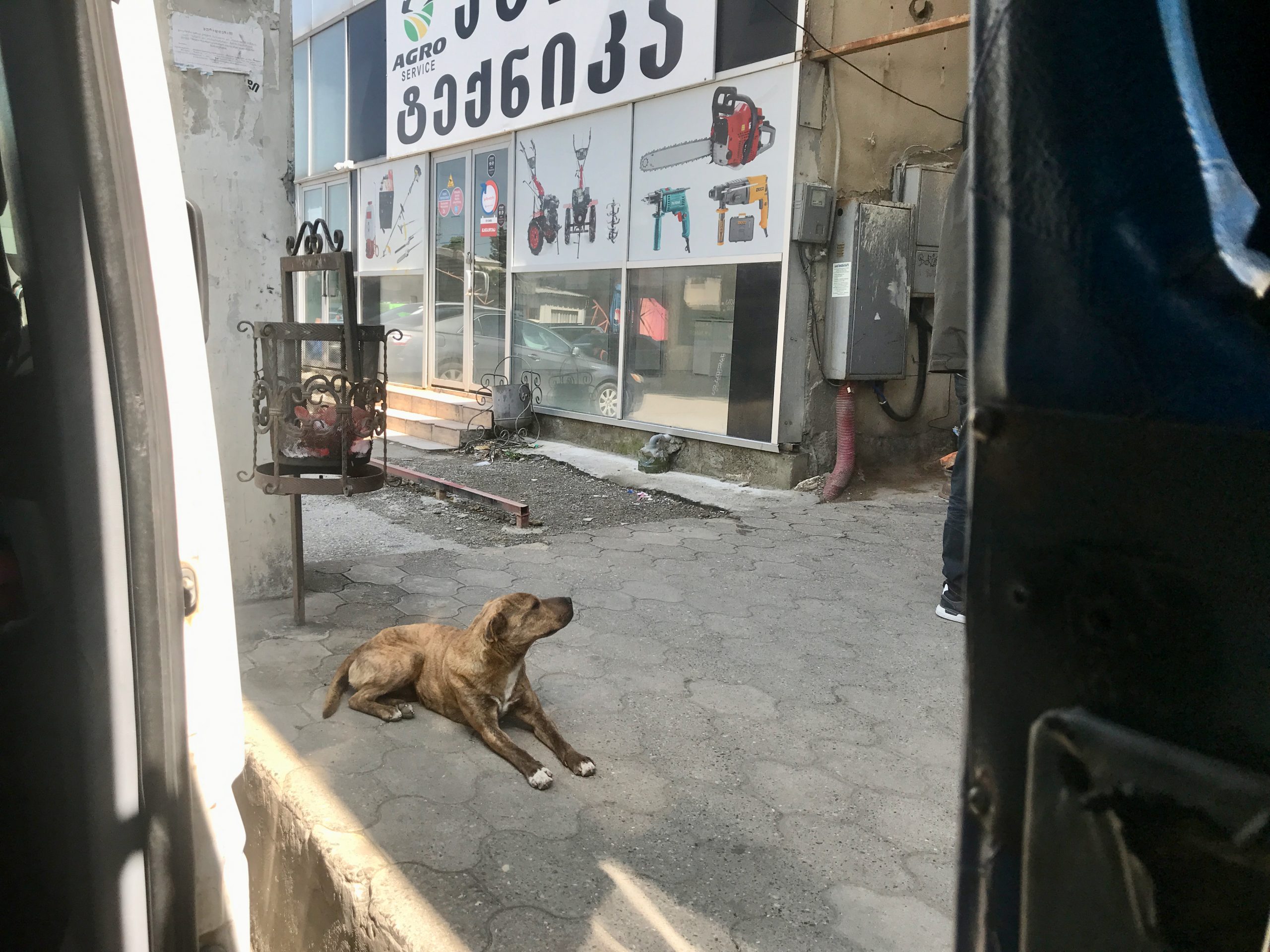
Fortunately, the sky didn’t look quite so gloomy in Poti in the morning. The man from the accommodation was very nice and drove me to the minibus and made sure that I got away well. The main way to get around the country here is by marshrutkas/minibuses – they leave more or less on time or when they are full. The first marshrutka drove quite empty to Kutaisi, where I had to change. That one waited until the last seat was filled. Sometimes the destination is written in Latin, sometimes not. But most of the time I ask anyway to be sure I’m in the right vehicle. It doesn’t cost much, today it was a little over 10 euros for 230 km, which took me about 5 hours including waiting time for a change. The roads are good so far.
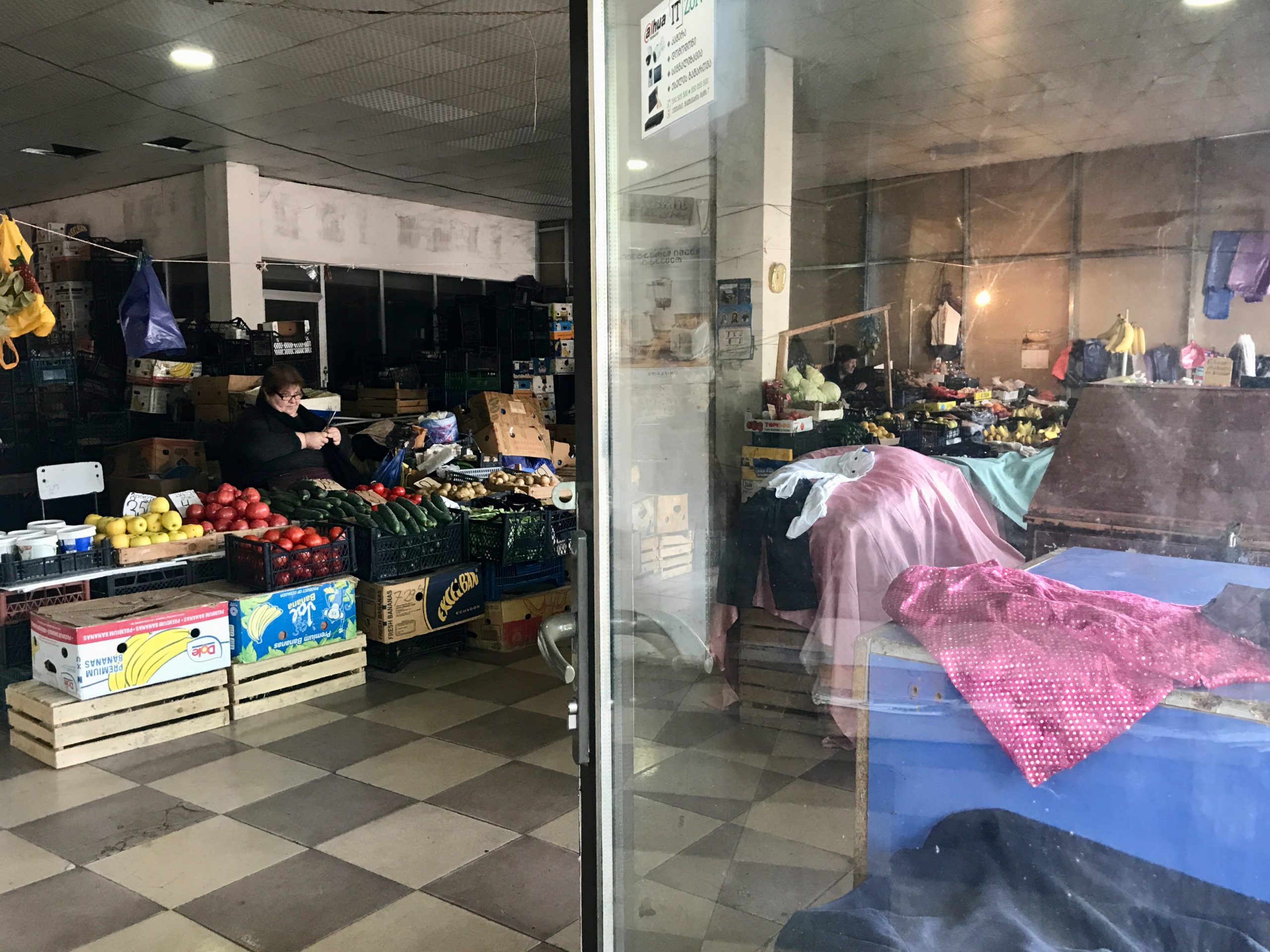 at busstand Kutaisi
at busstand Kutaisi
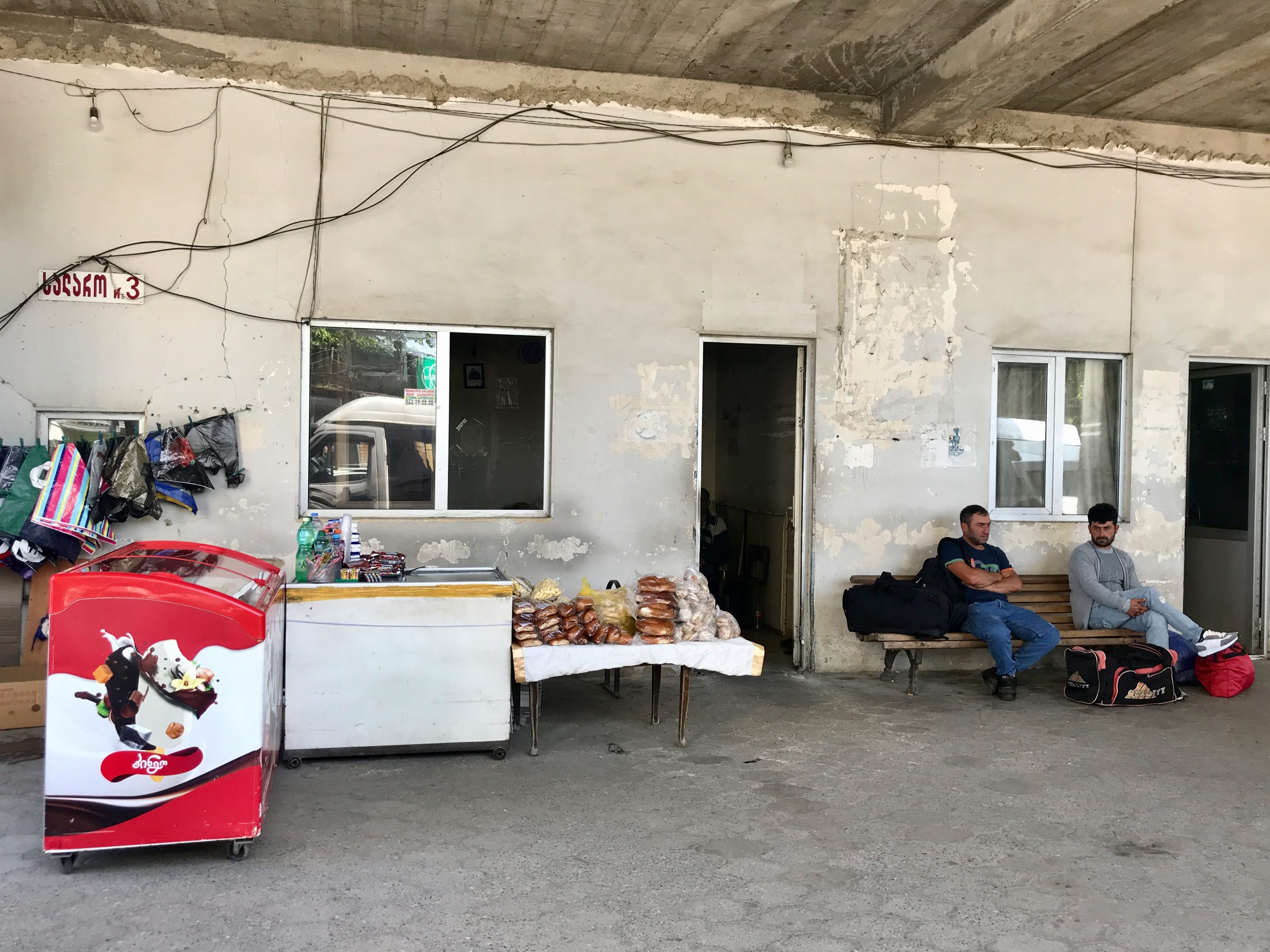 waiting people at busstand Kutaisi
waiting people at busstand Kutaisi
Borjomi is a tourist destination. This could also be seen from the fact that there were various souvenir stalls and restaurants along the road. It was getting greener and hillier. We stopped at a restaurant. I had only looked in briefly, wondered about the tables being ready (hardly not to ask, I’ll find out) and was a bit upset that the toilet cost an entrance fee, but none of the doors were lockable. All broken.
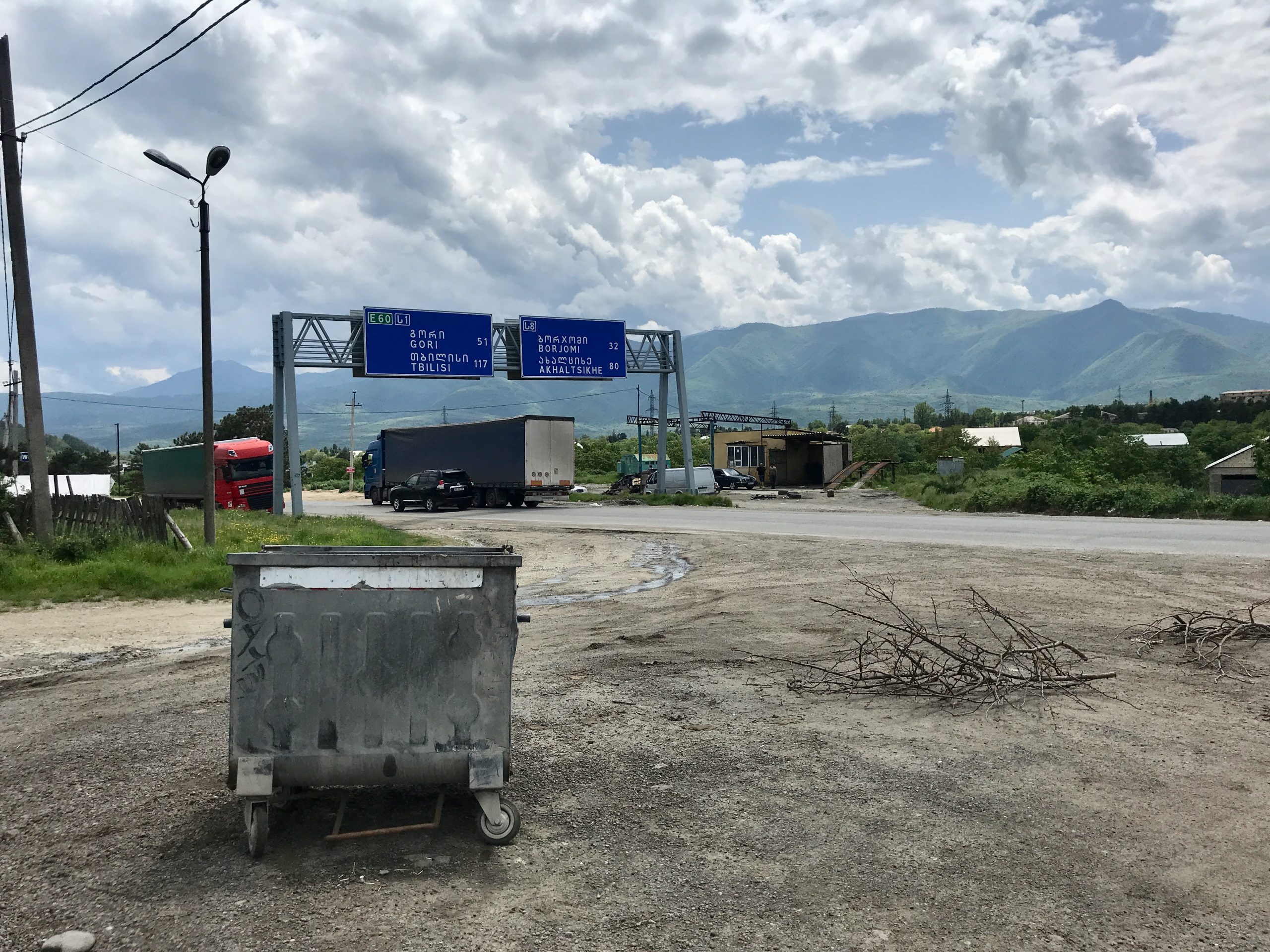 break
break
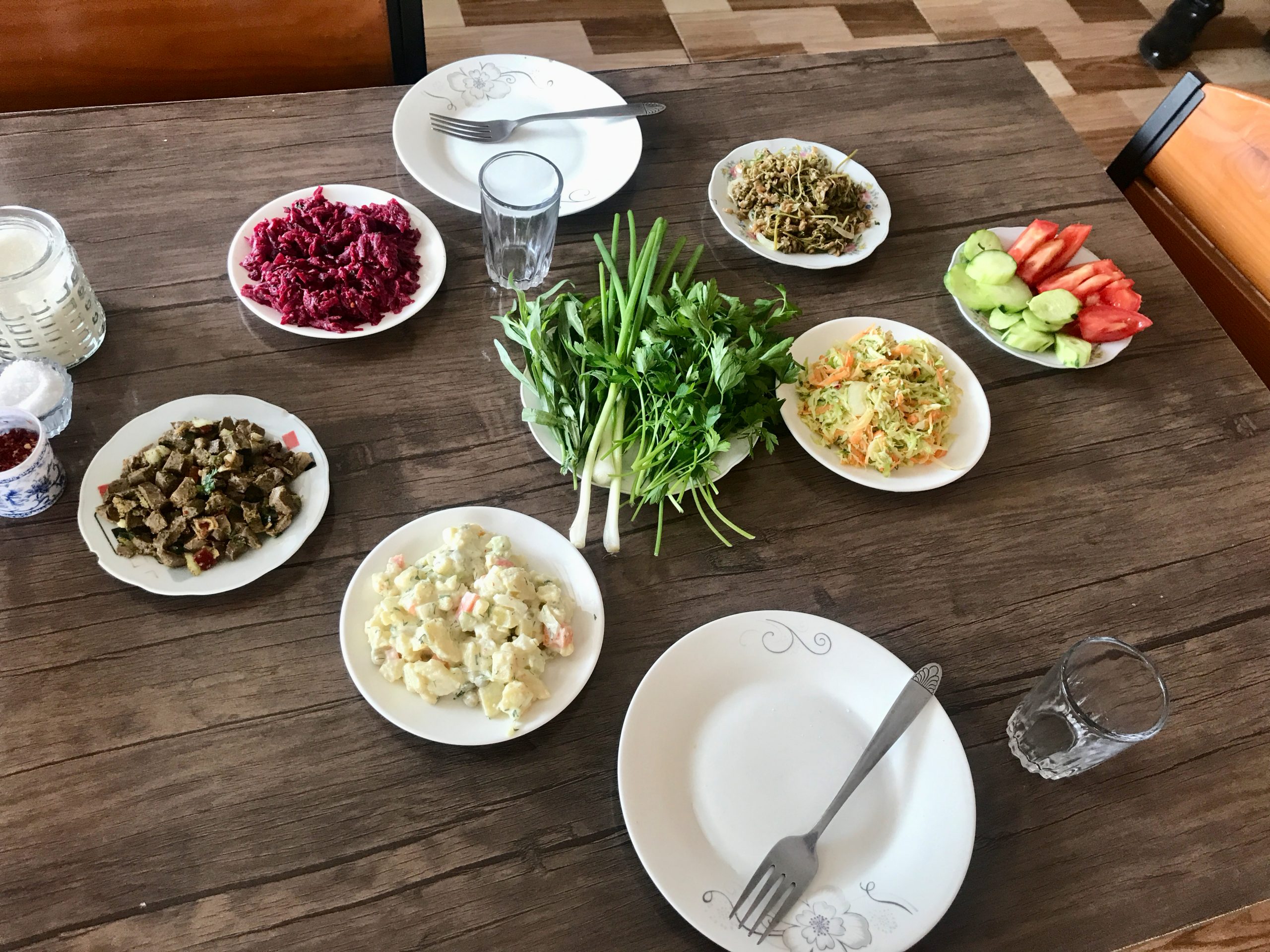 laid table
laid table
And then I was in Borjomi. After finding the 12th floor at Nikita’s so great and the ground floor in Poti so awful, I’ve now booked the 11th floor here. It’s a typical Soviet building, relatively dilapidated-looking, but with decent flats and a lift inside. But it still looks so crumbling in many places, with cables and pipes hanging around, that I sometimes imagine it collapsing in on itself.
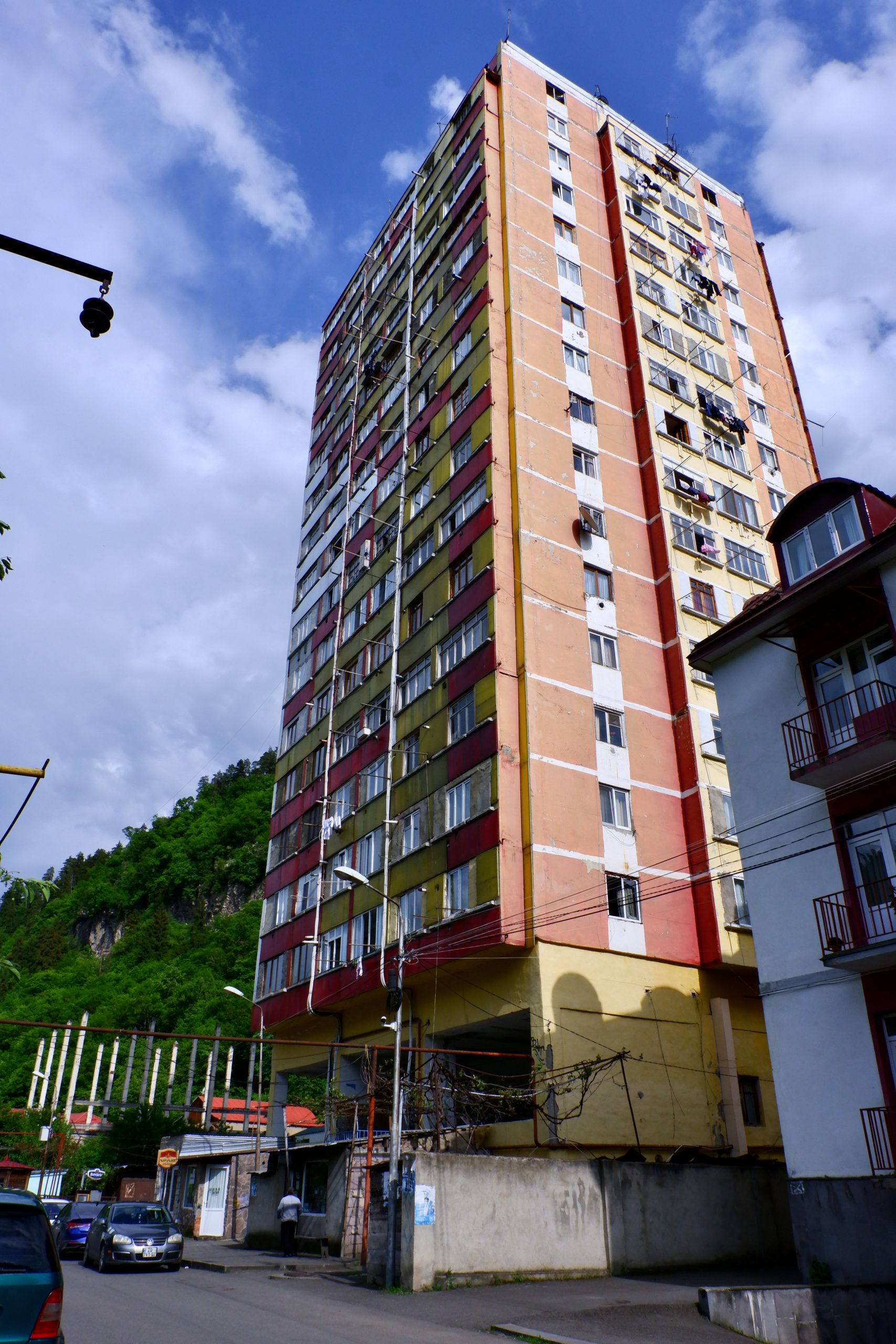 multi-storey building
multi-storey building
I was able to do the laundry and hang it up here – although I had small signs of fear of heights when I leaned out of the window. But everything went well and no peck or sock fell down either.
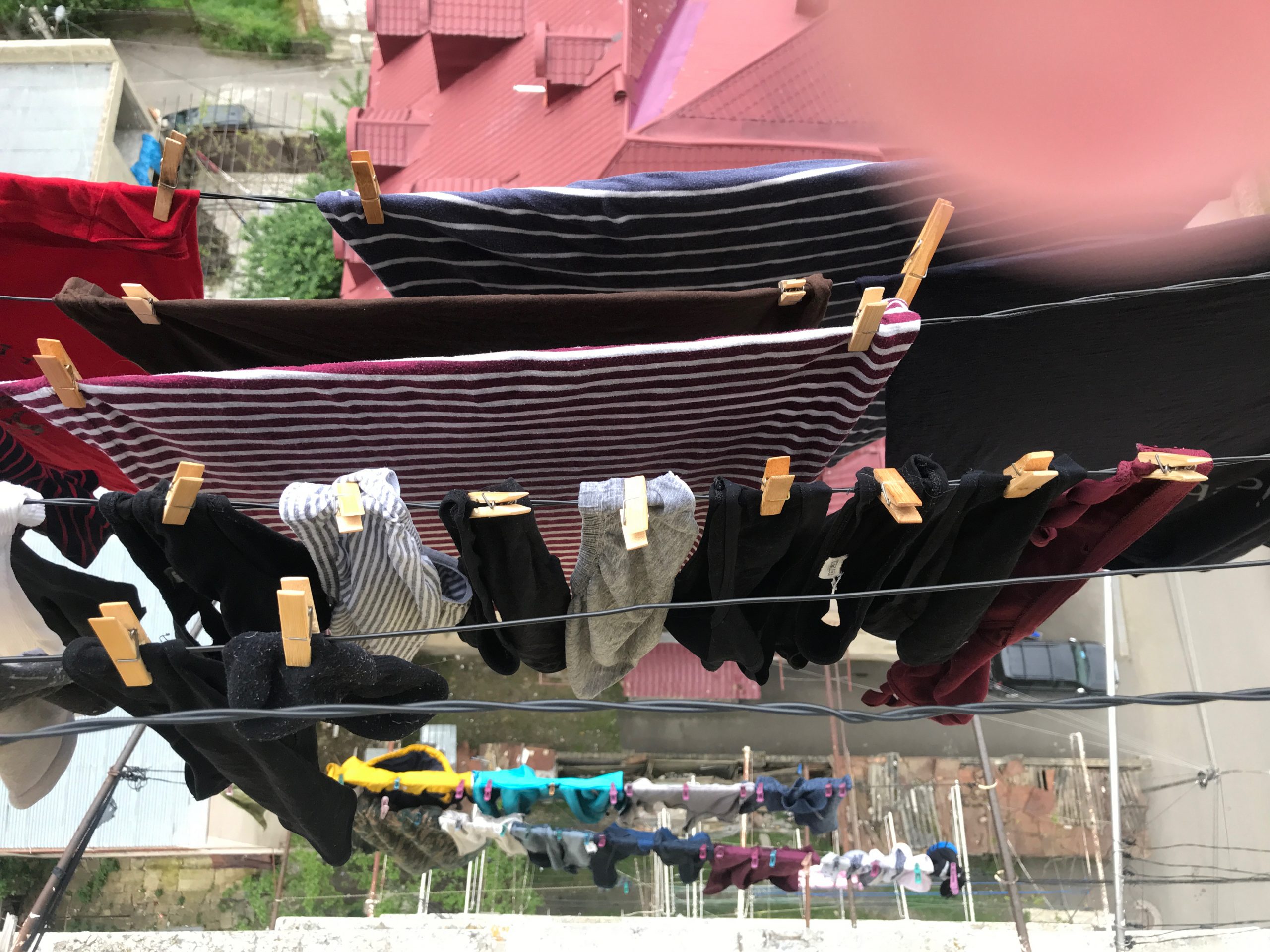 laundry
laundry
So Borjomi is touristy. It has a great past. Healing water springs were discovered here very early. From 1850 it was used as a health resort for Russian people seeking healing. Rich people built fancy villas, even the Tsar owned one. Among the spa guests were Tchaikovsky and Tolstoy. During the Soviet era, these took over the regime and also used the healing springs. Stalin stayed here, too. At the beginning of the 20th century, the healing waters were bottled and distributed. This is still successful today. You can bottle the water yourself or buy it in shops and it tastes horrible.
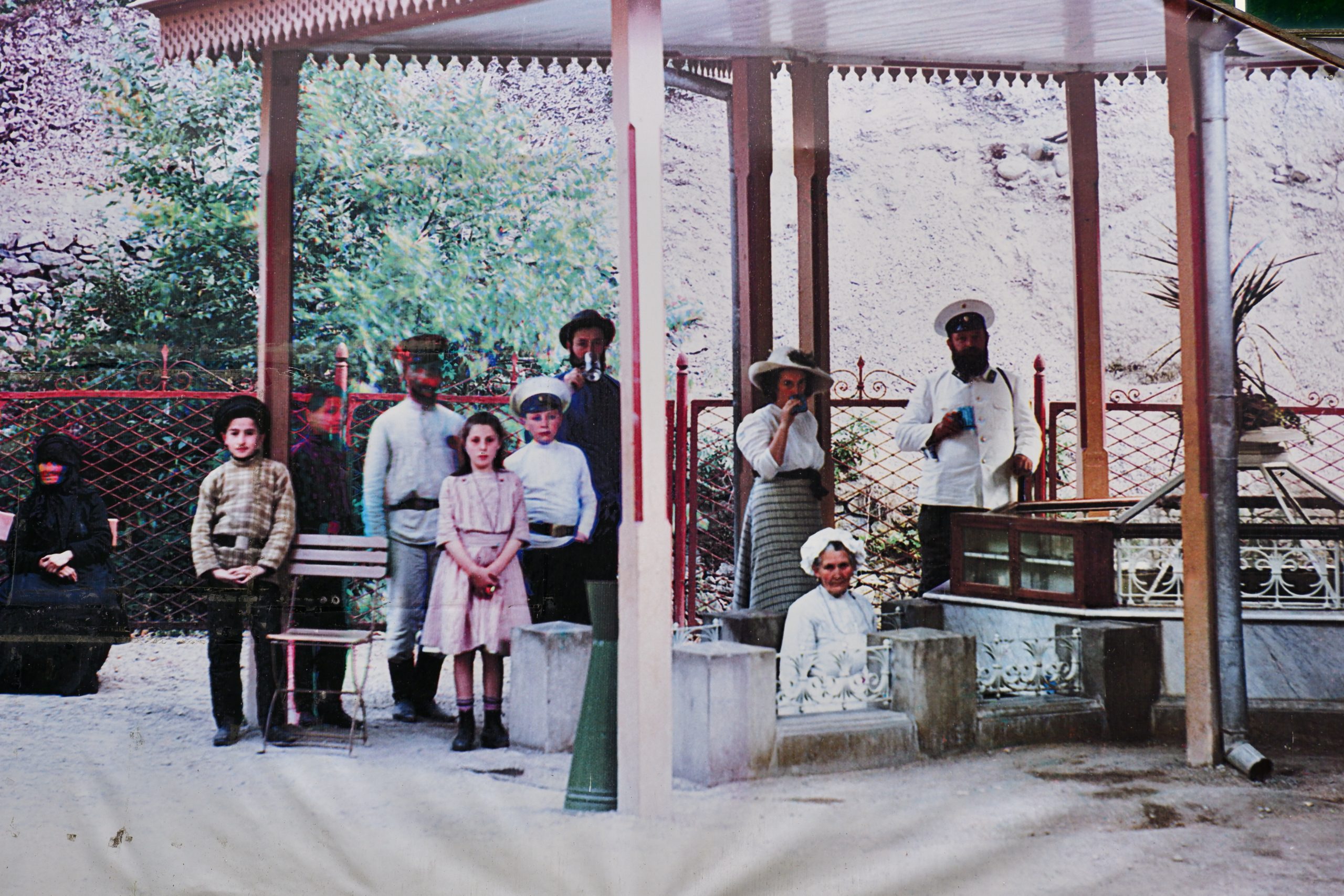 photo of old times with health resort guests
photo of old times with health resort guests
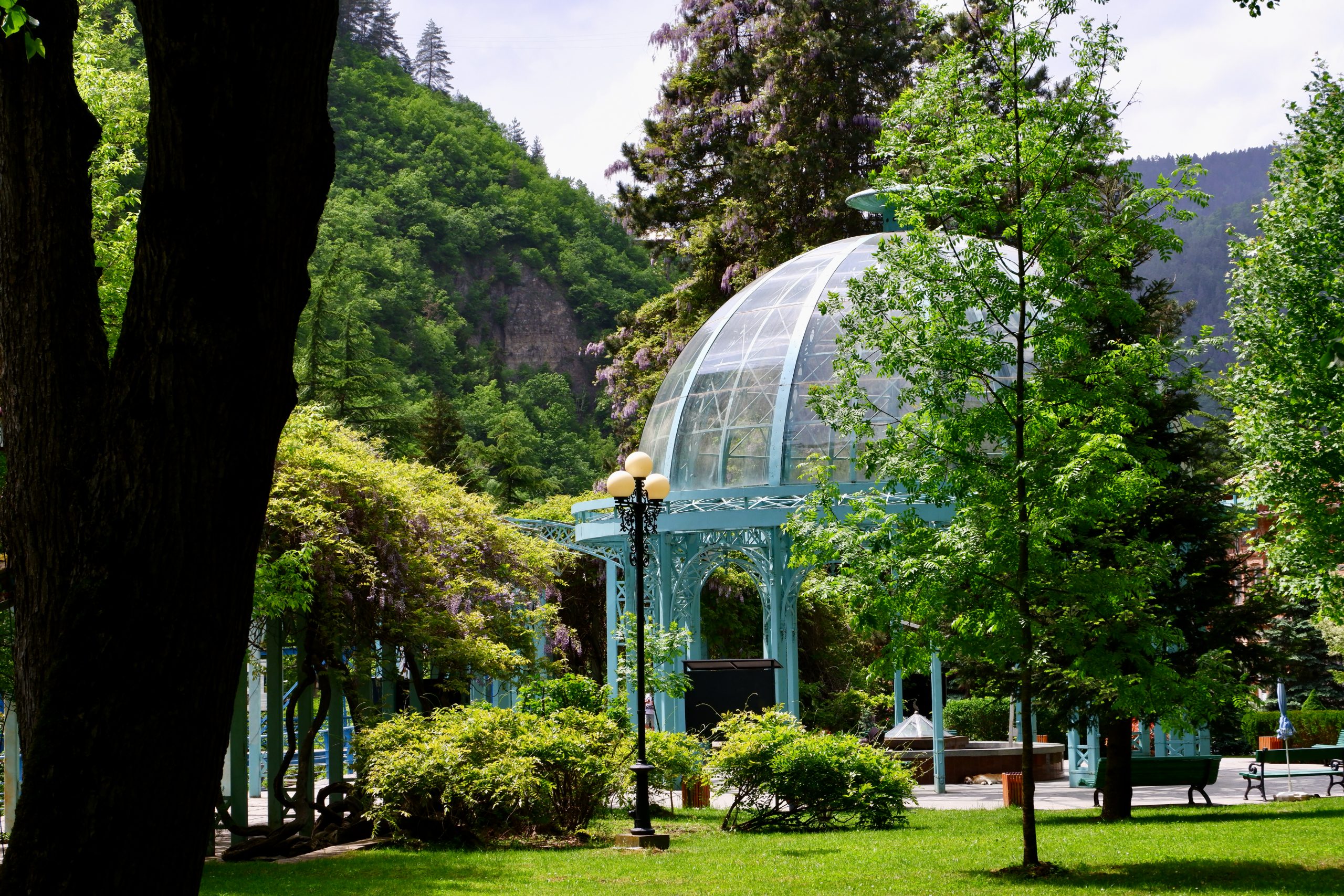 Pavillon
Pavillon
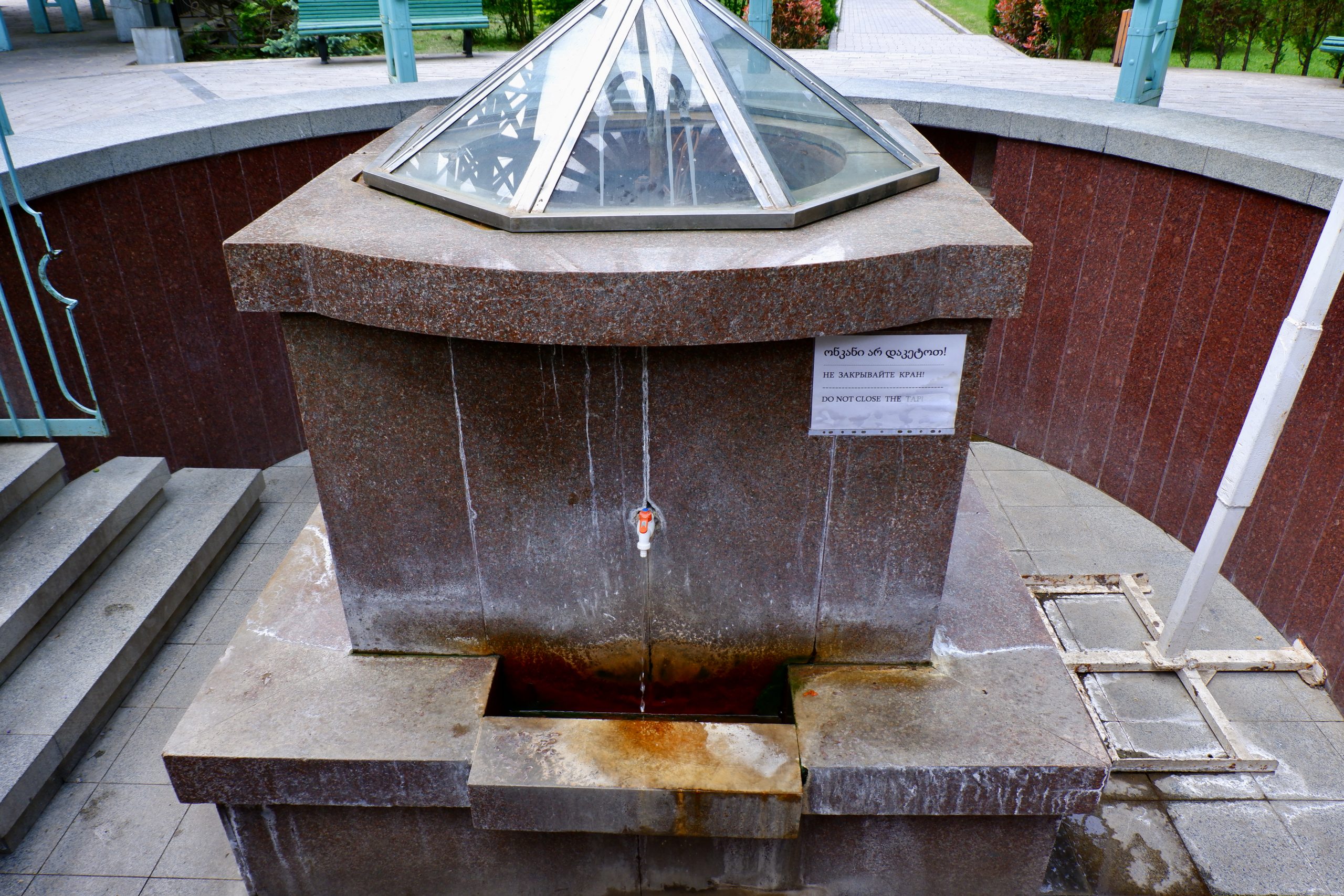 healing water spring in Spa park
healing water spring in Spa park
I was also in Borjomi in 2008. At that time I found it very miserable and sad, buildings dilapidating everywhere, lacking the money for renovations. After the collapse of the Soviet Union, the Russian spa guests stayed away and the place collapsed, too. At first, refugees from Abkhazia were accommodated in the old spa hotels. In the meantime, everything is changing again. The old spa park has been beautifully restored and welcomes travellers who also enjoy the surrounding nature, e.g. in the nearby national park. But of course there is still plenty of “junk” to see.
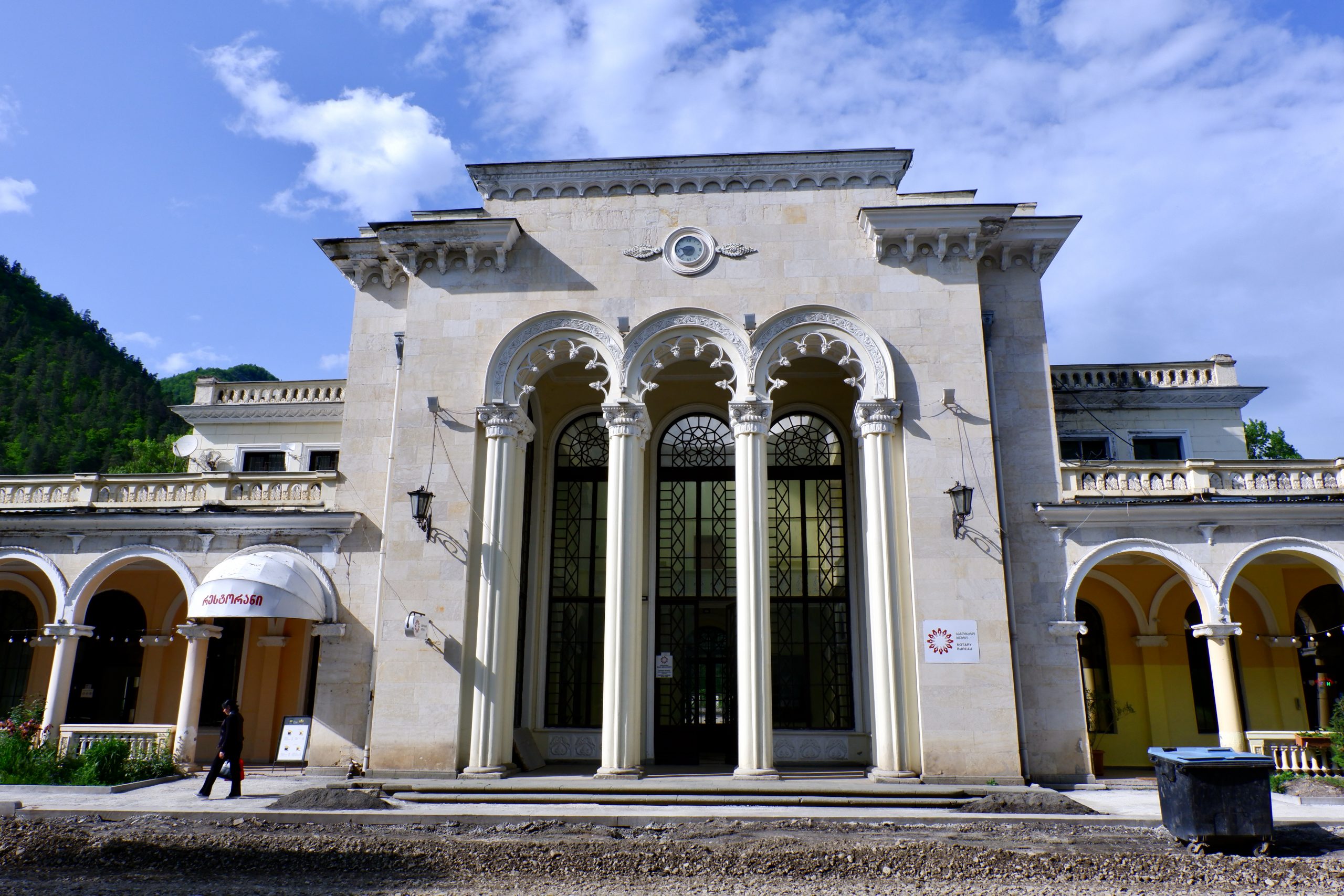 train station, renovated by now
train station, renovated by now
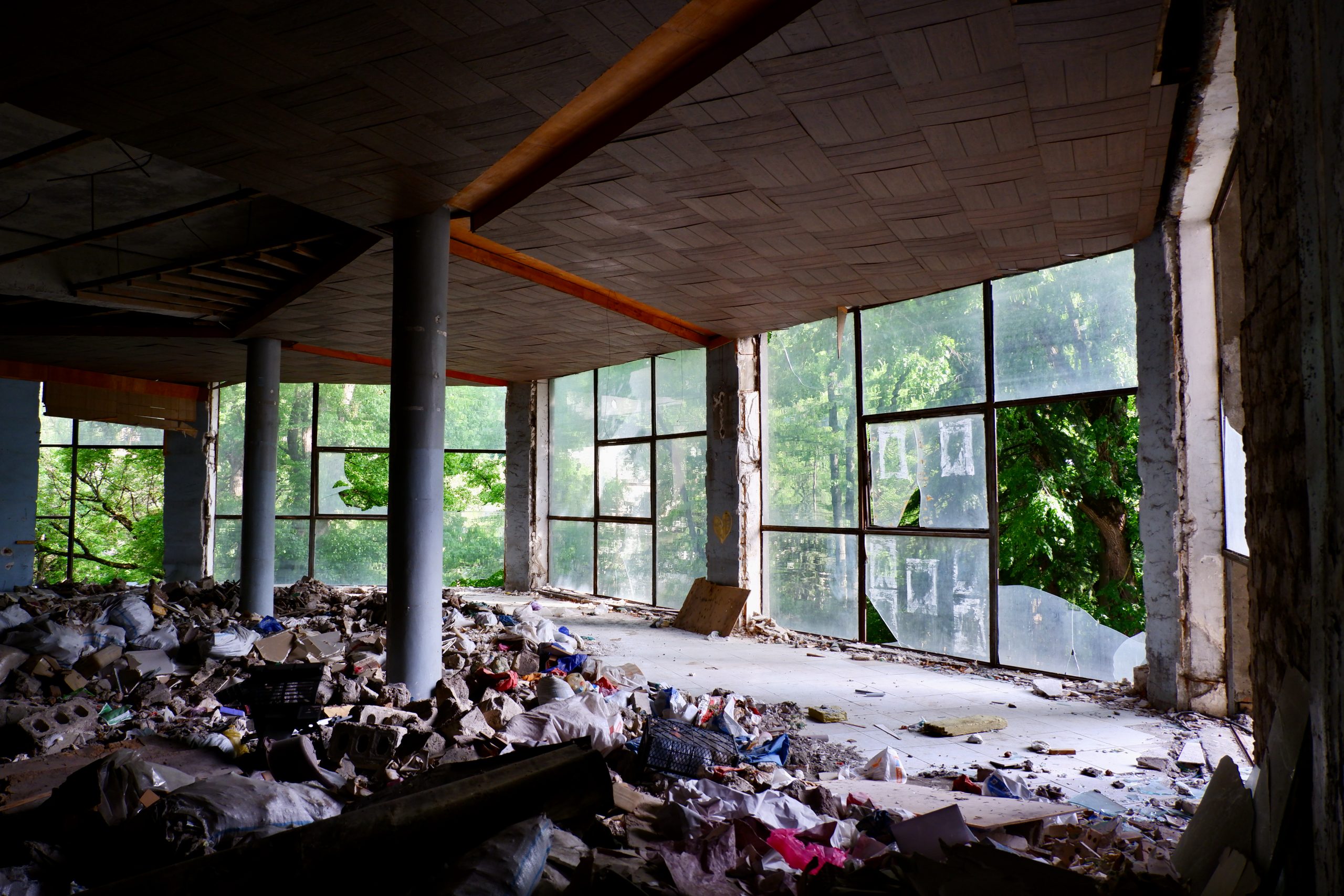 Dilapidation
Dilapidation
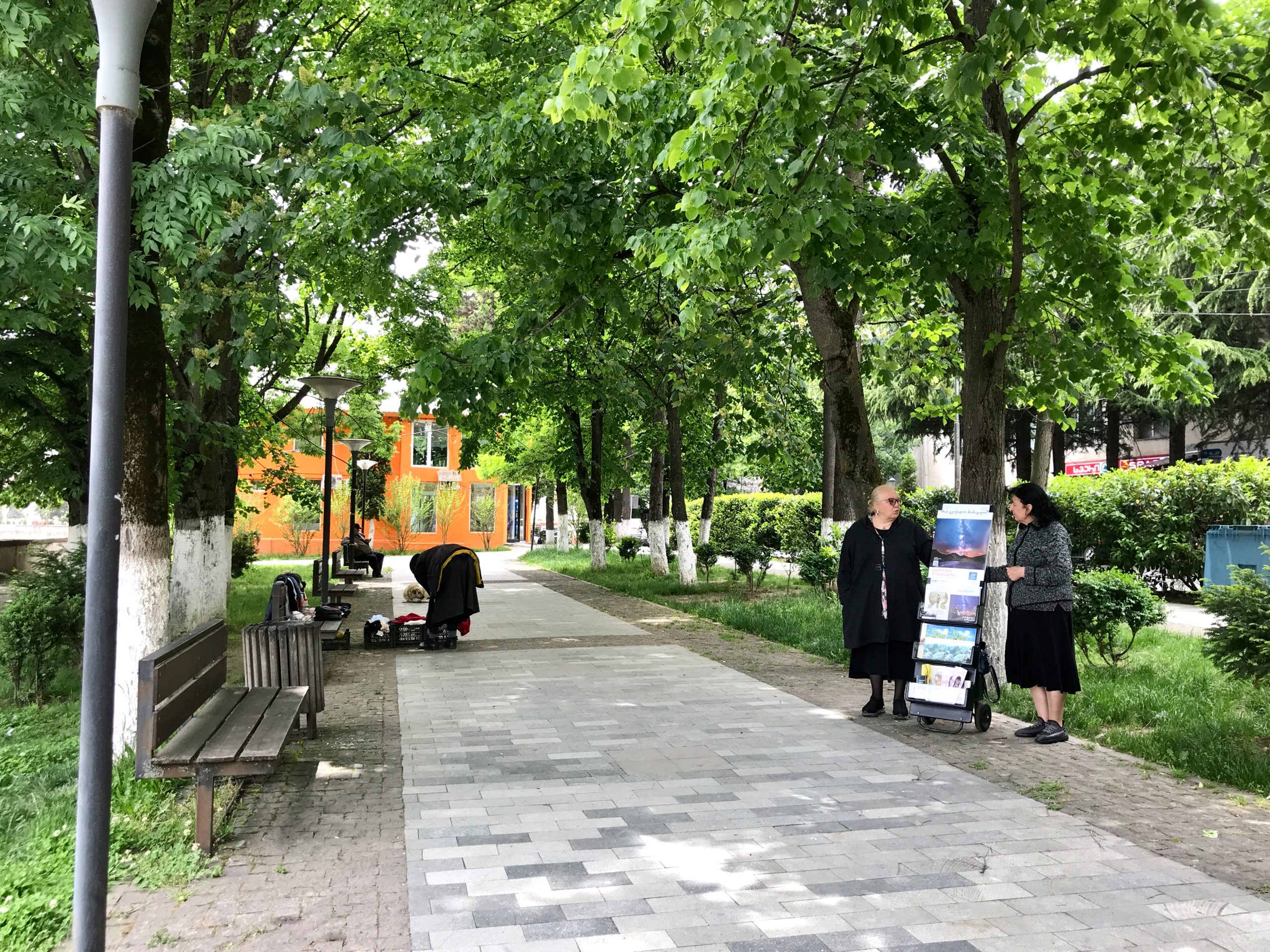 Jehovas Witnesses at the river promenade
Jehovas Witnesses at the river promenade
I first did a short hike through the forest to a 300 m higher hill, which didn’t offer a great view, but it was very nice just to walk around in nature. They offer several signposted tours here – this was the green route, well marked. I only met 2 people coming towards me at the very end.
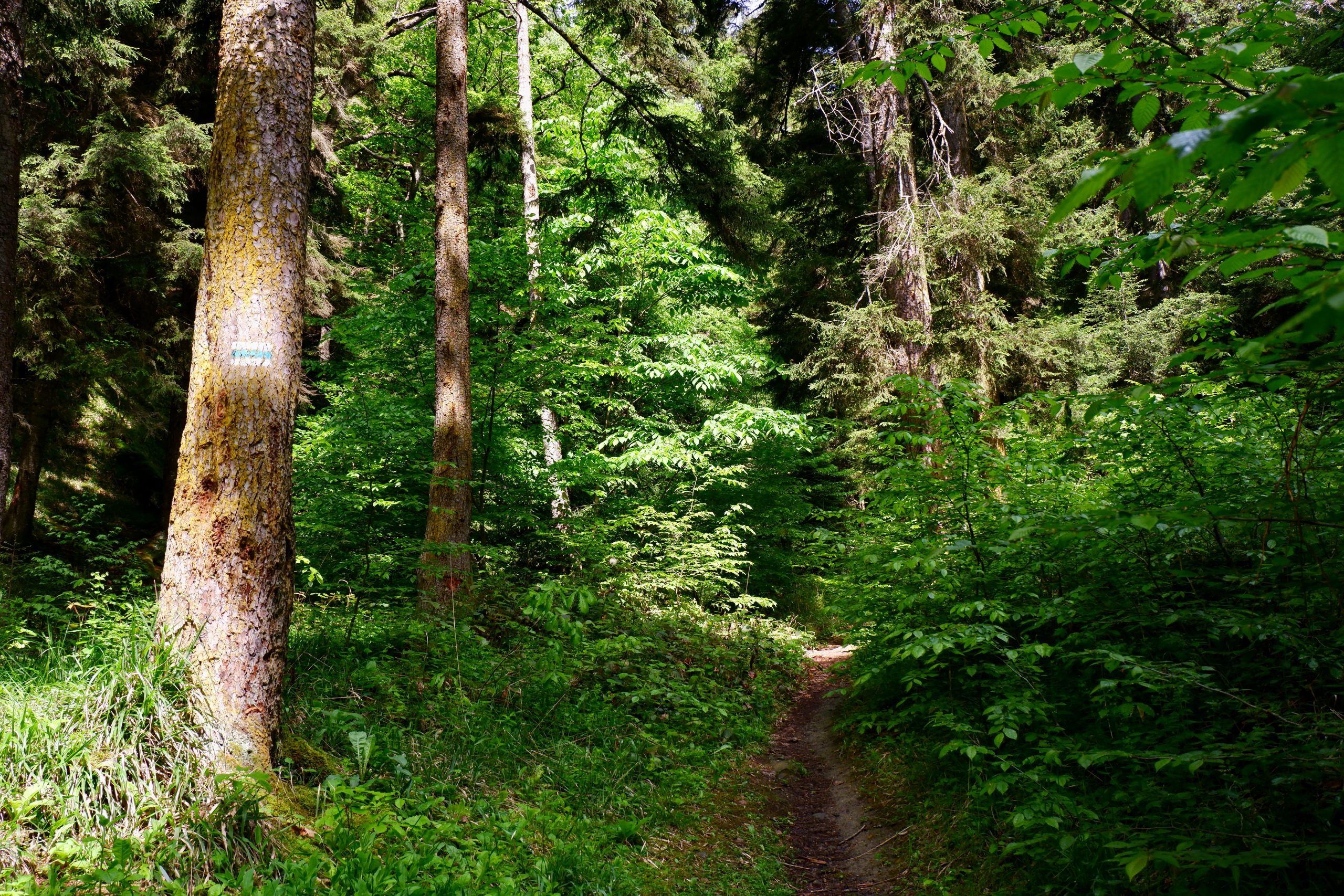 forest
forest
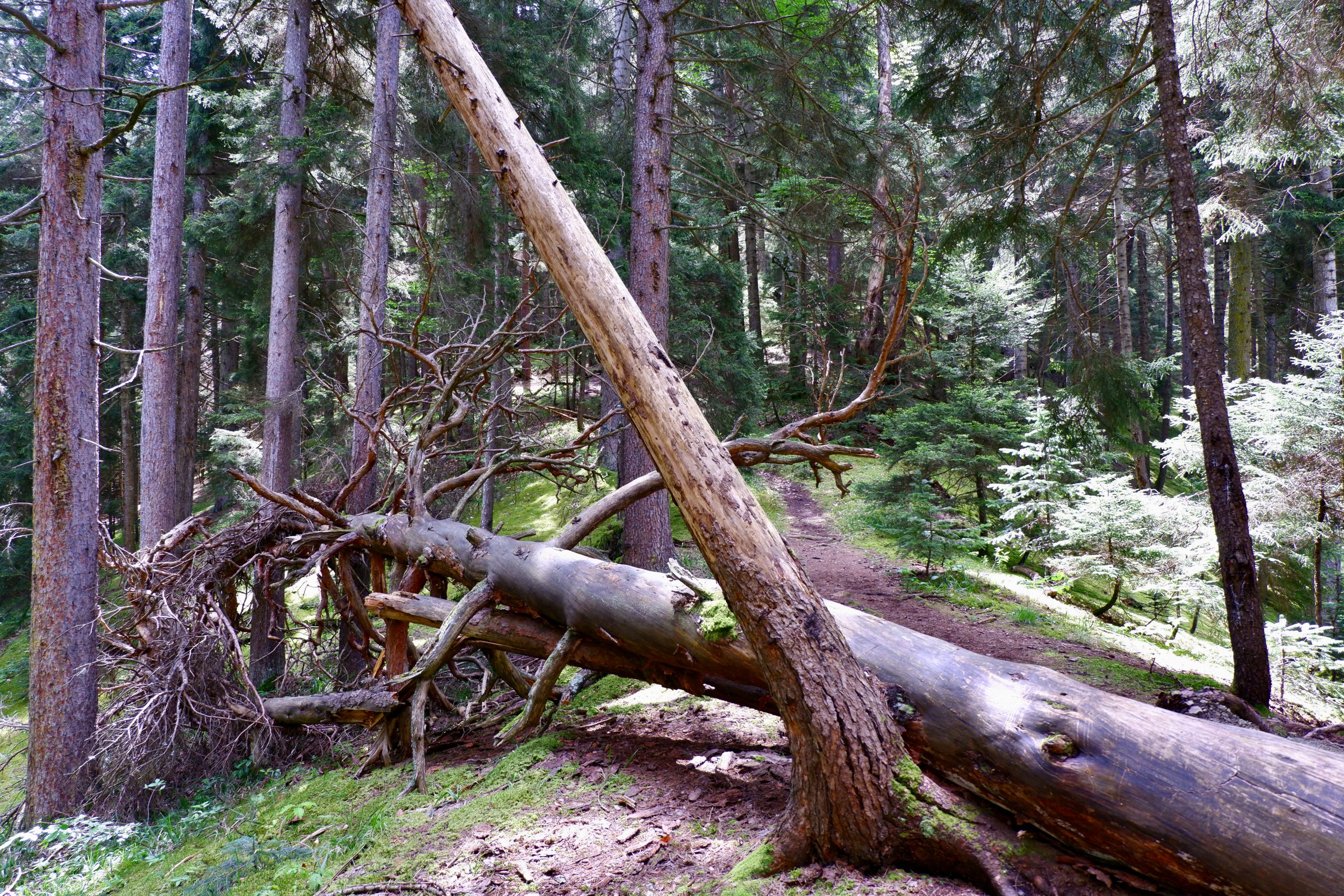 trail with small obstacle
trail with small obstacle
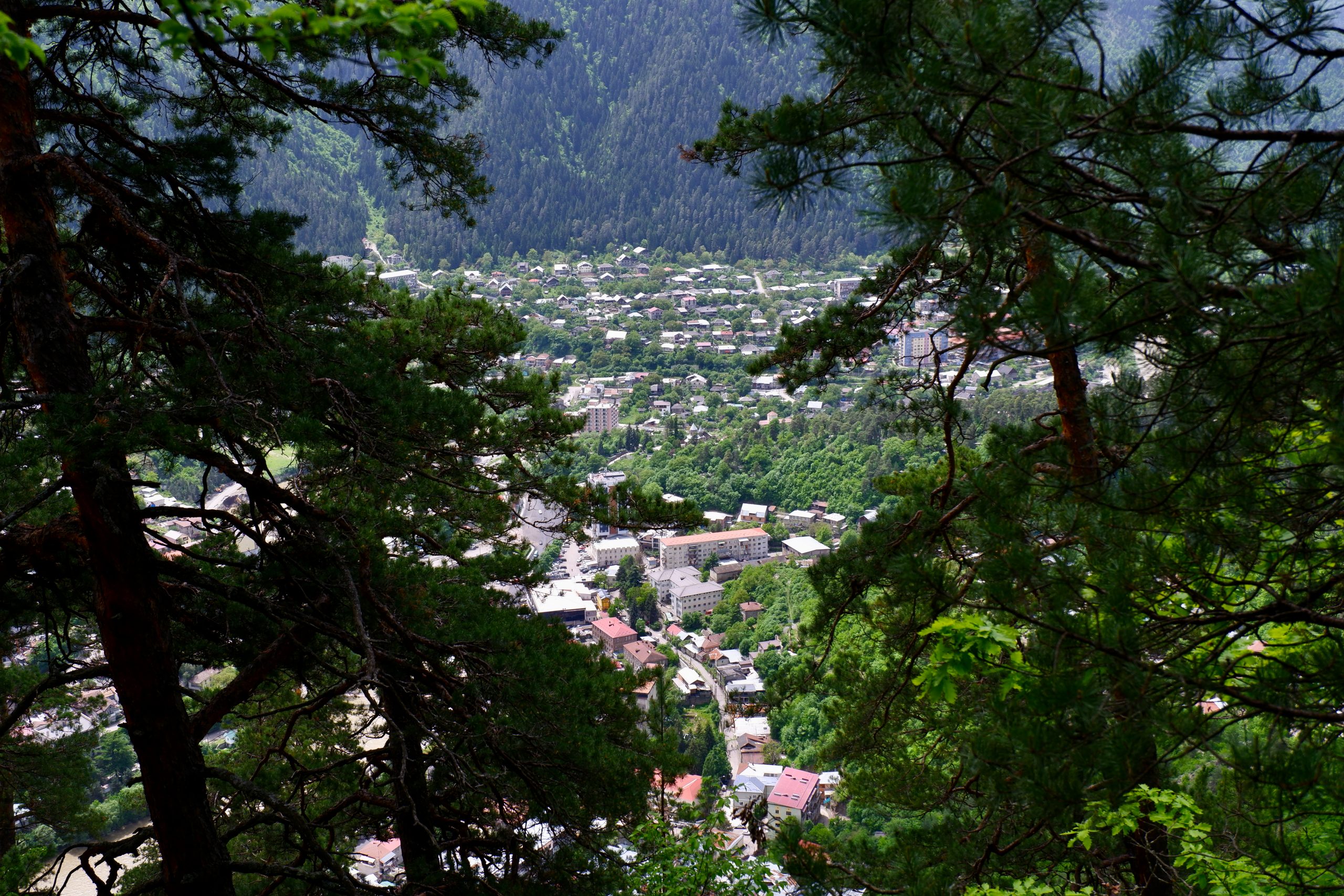 not ideal view of Borjomi
not ideal view of Borjomi
At noon I was back downstairs and went to an Indian restaurant. I had a bit of a “longing for home” and was not disappointed. Except that it was a bit expensive. But it tasted Indian and the owner and manager were from Pakistan and the waitress from here. The waitress was very sweet, totally enthusiastic about my visit (I was the only guest), spoke broken English and had only been employed for 2 weeks or so. The manager came from Karachi, had worked mostly in sales (shoes) and had lived in many places in the world (Dubai, China, etc.). And now he had moved to Borjomi and into gastronomy. The last time he was at home was 8 years ago. Difficult with Pakistan. What I find interesting, by the way, is that there is also an Indian restaurant in my village, run by Pakistanis. And here the restaurant is called “Maharaja” and advertises Indian food. It’s kind of funny that Pakistani cuisine hasn’t managed to establish itself in such a way that they declare their restaurants as Indian.
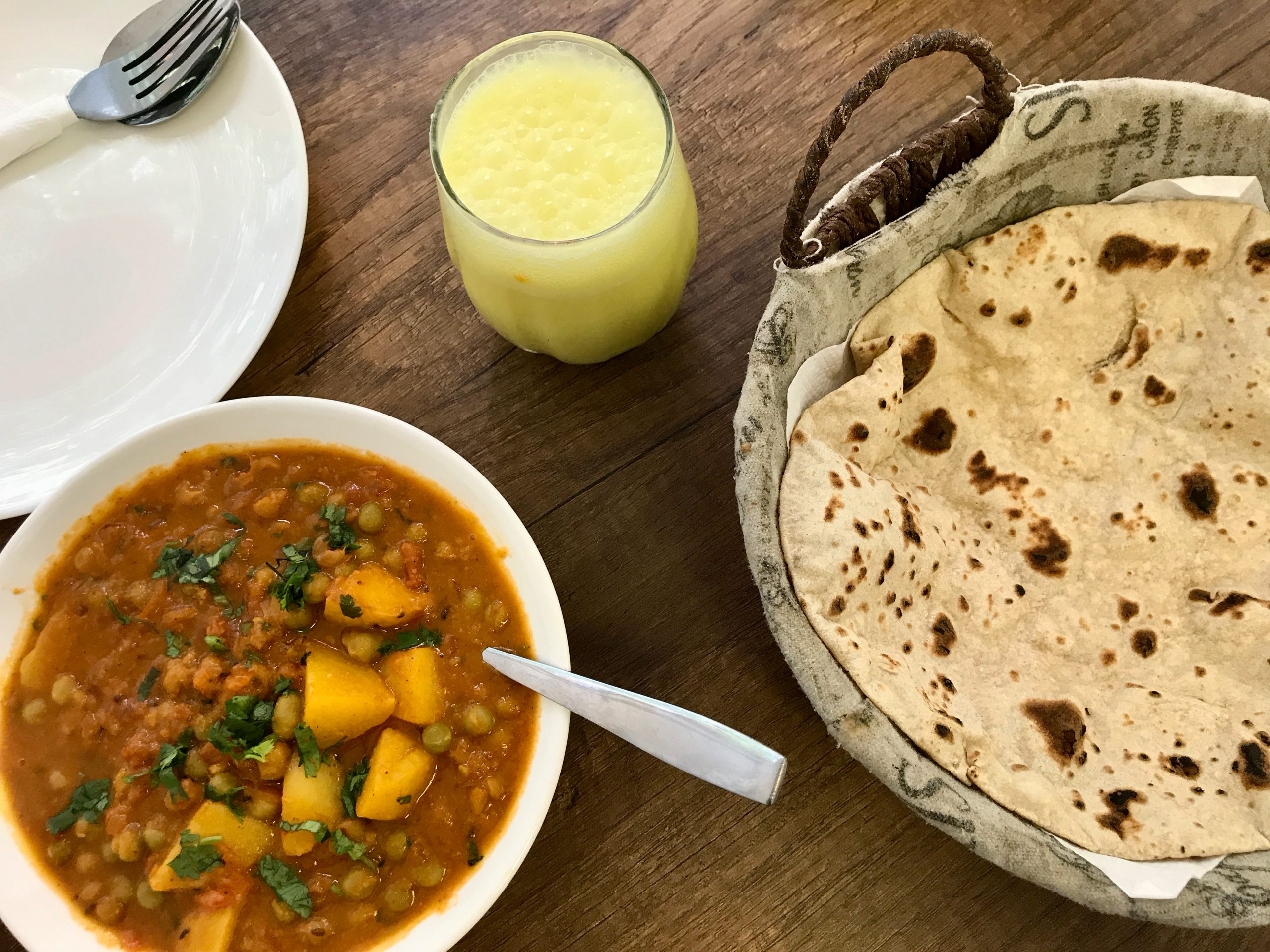 Alu Mattar with Chapati
Alu Mattar with Chapati
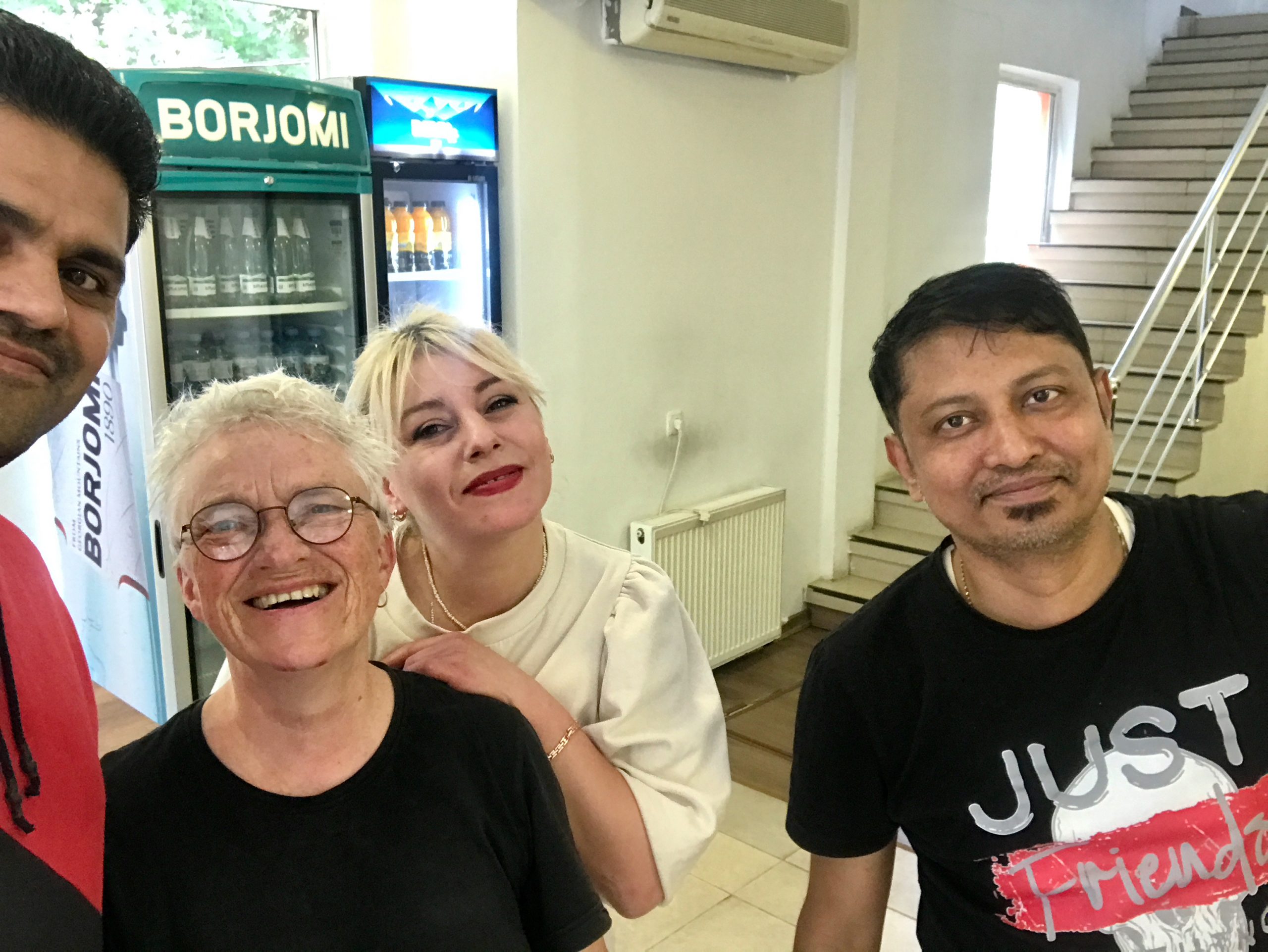 Manager, me, waitress and owner
Manager, me, waitress and owner
Then I walked through the spa gardens. It stretched far up a valley and had various fairy rides. However, there were no customers. It was still well before the season. But I now enjoy photographing fairy rides that seem so lost to me.
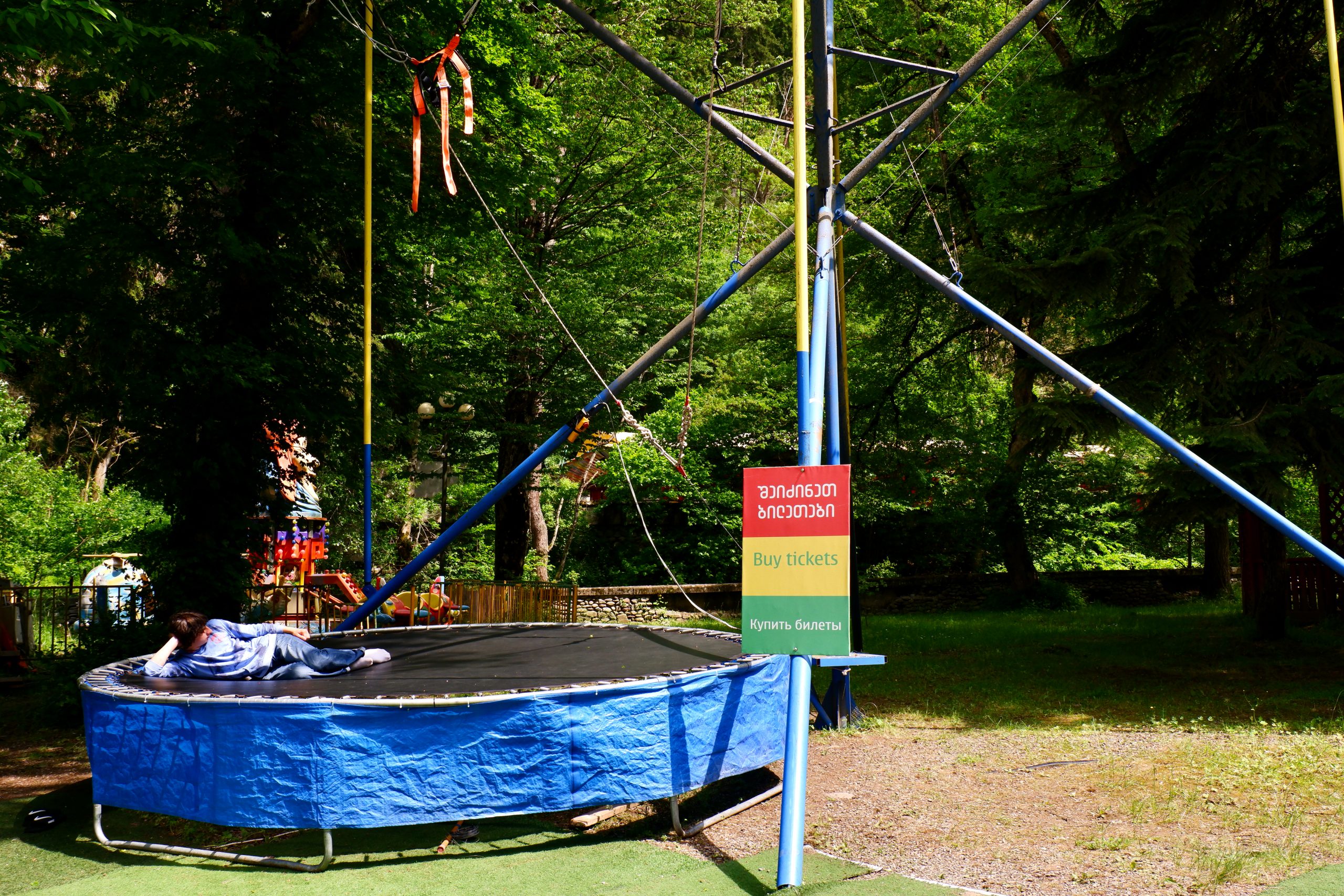 waiting for customers
waiting for customers
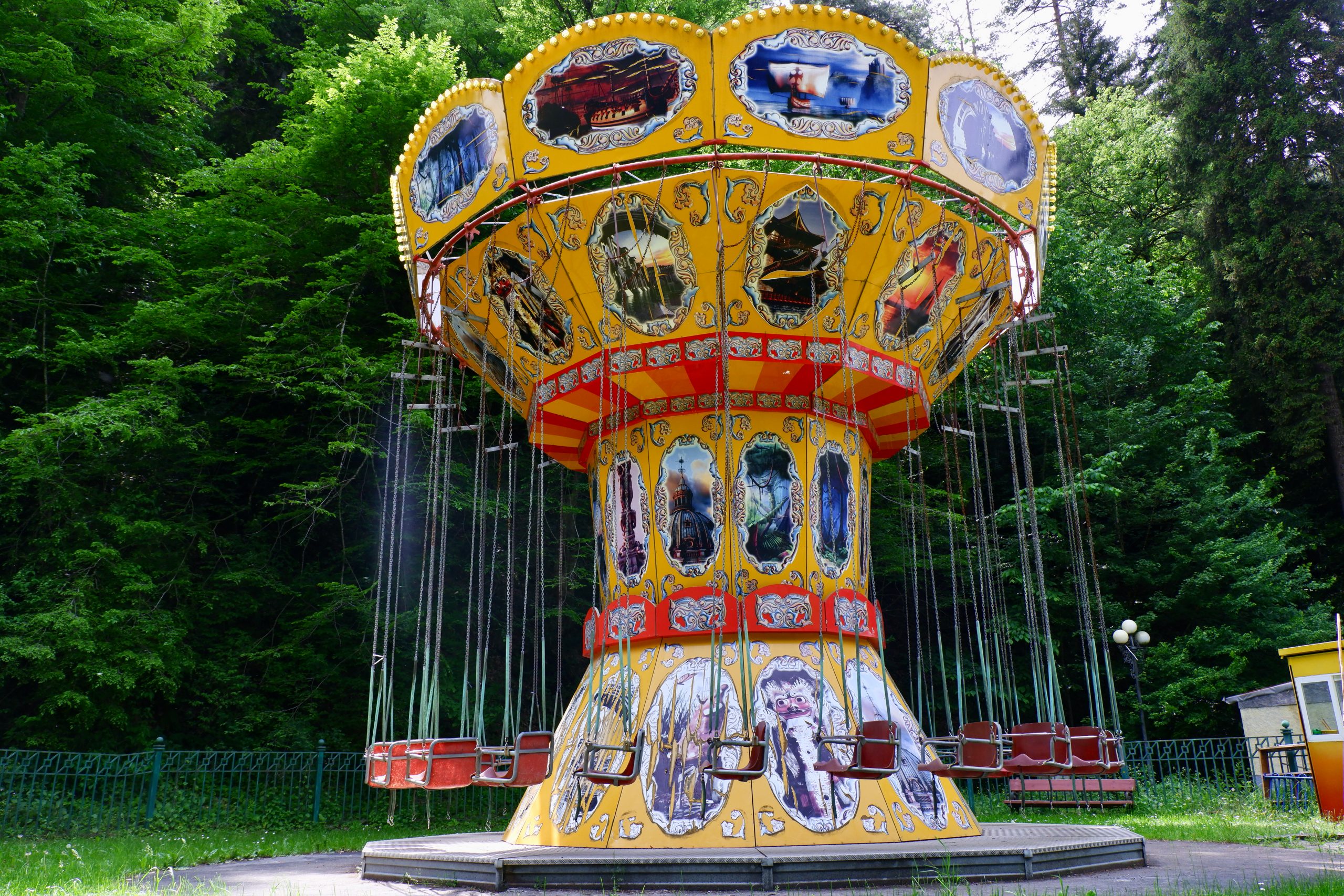 1
1
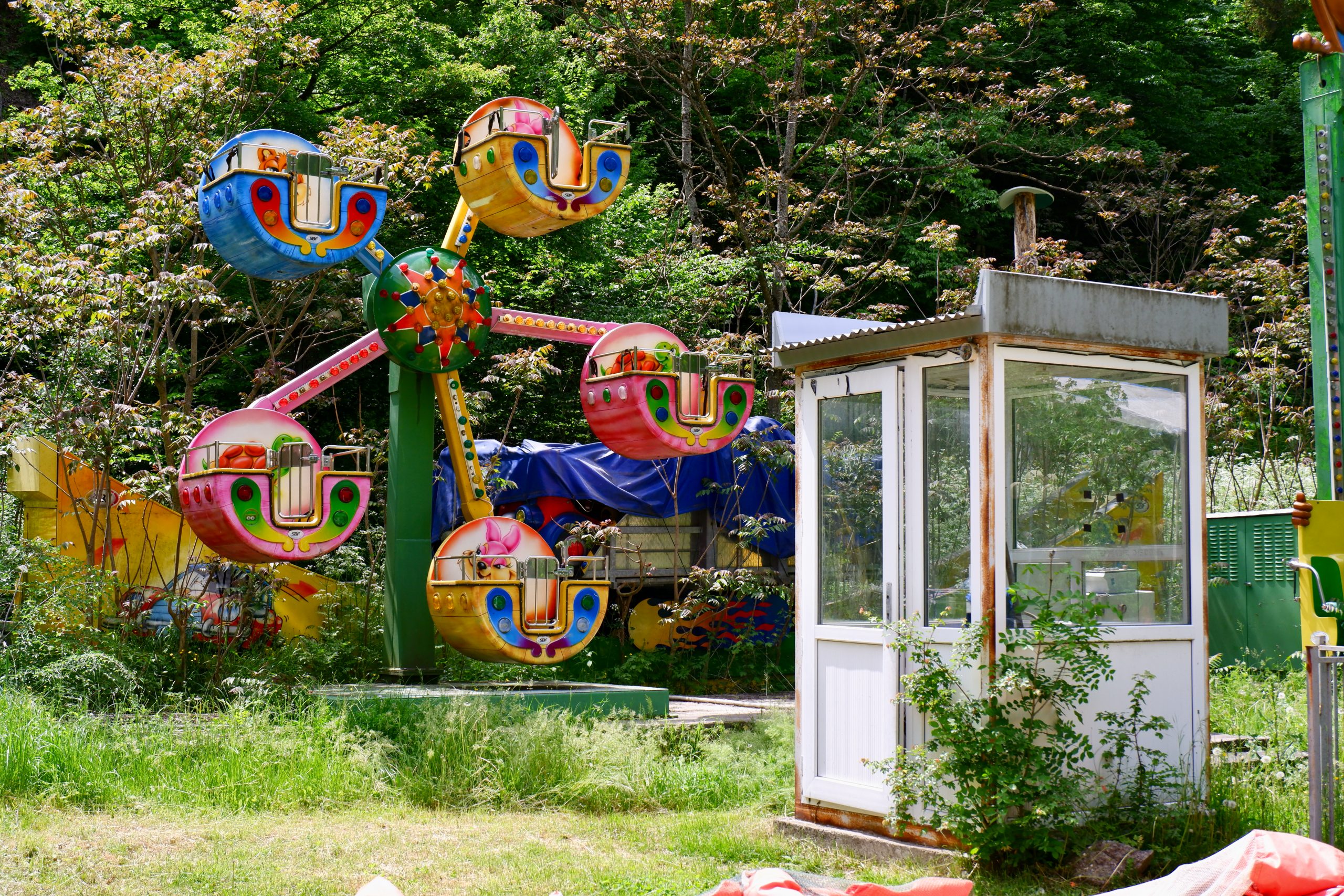 2
2
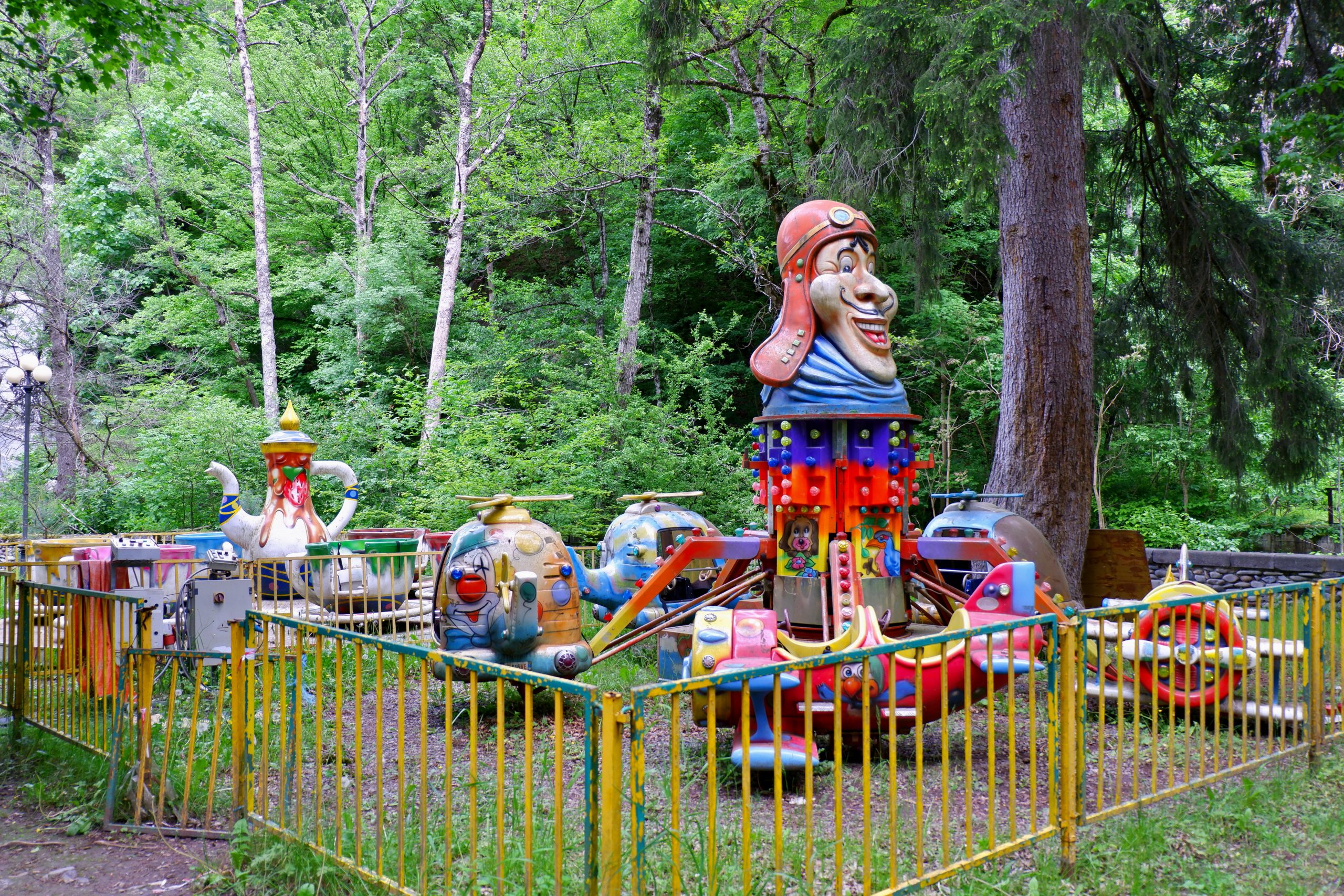 3
3
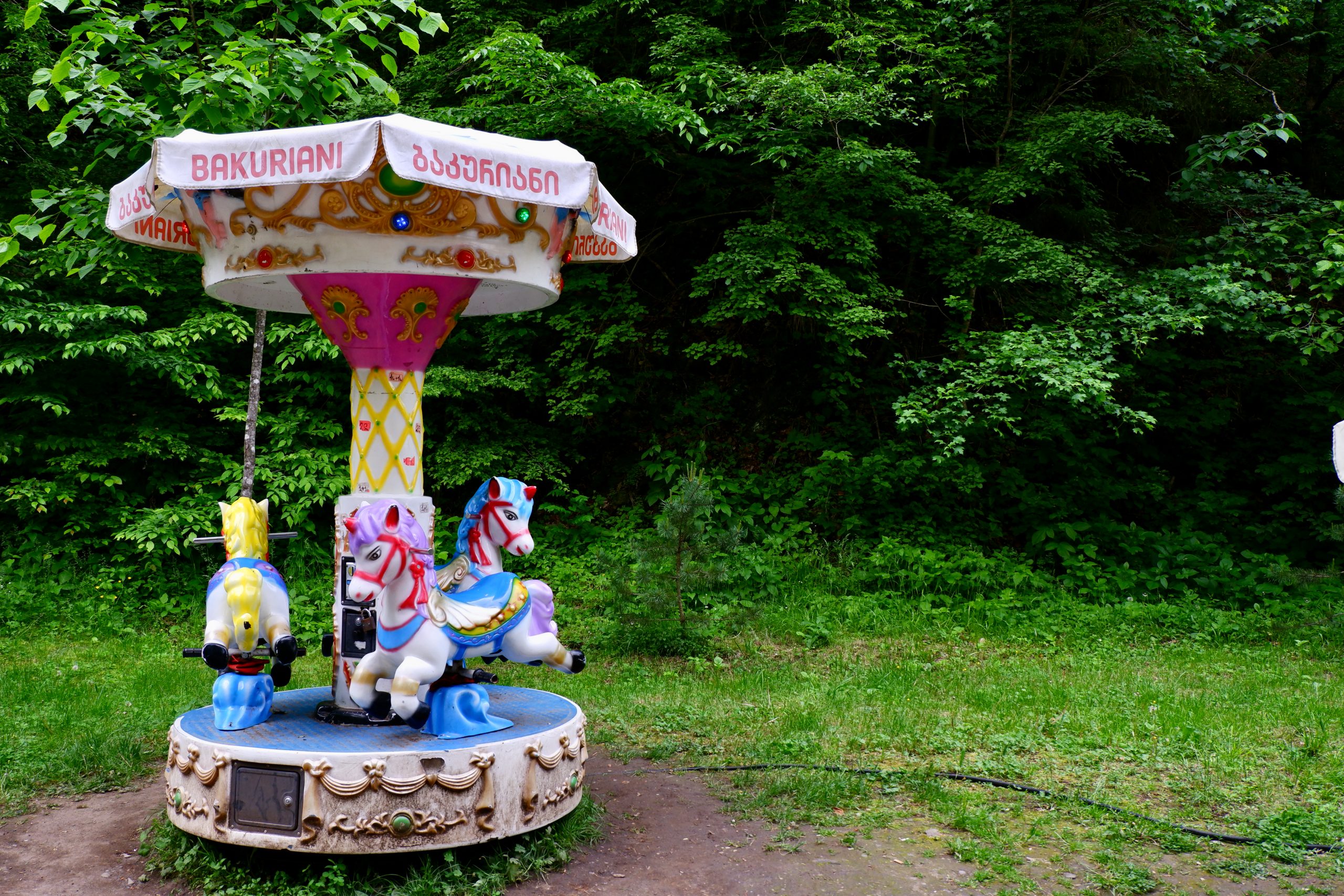 4
4
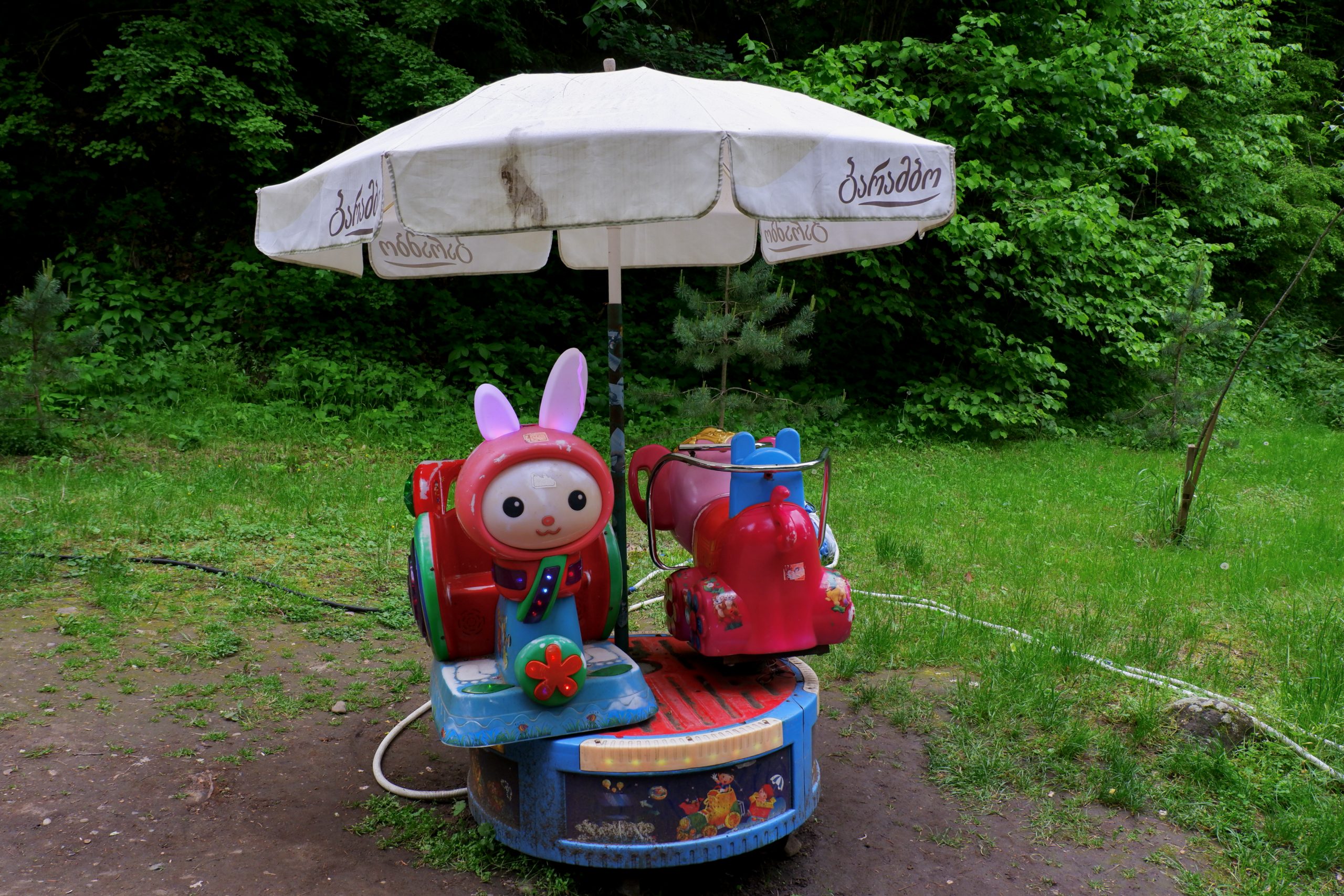 5
5
If you walk another 2 km through beautiful forest at the end of the park, you come to the sulphur spring bath. Here, expectations and reality diverged somewhat: it smelled neither of sulphur nor was the water hot. But it was still nice to lie in the pool. And I actually didn’t see anyone trying to defy the ban with a tie.
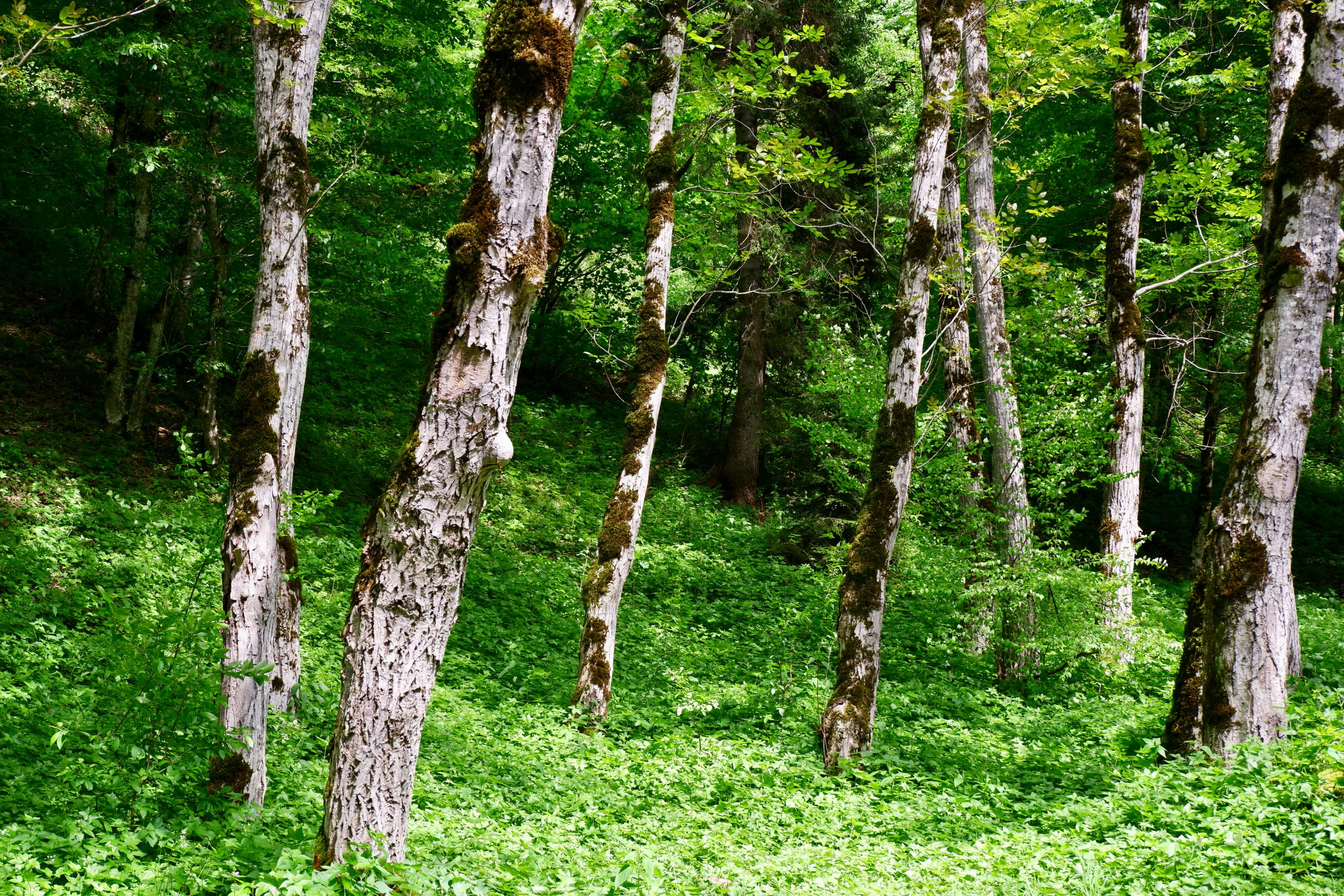 way towards bath
way towards bath
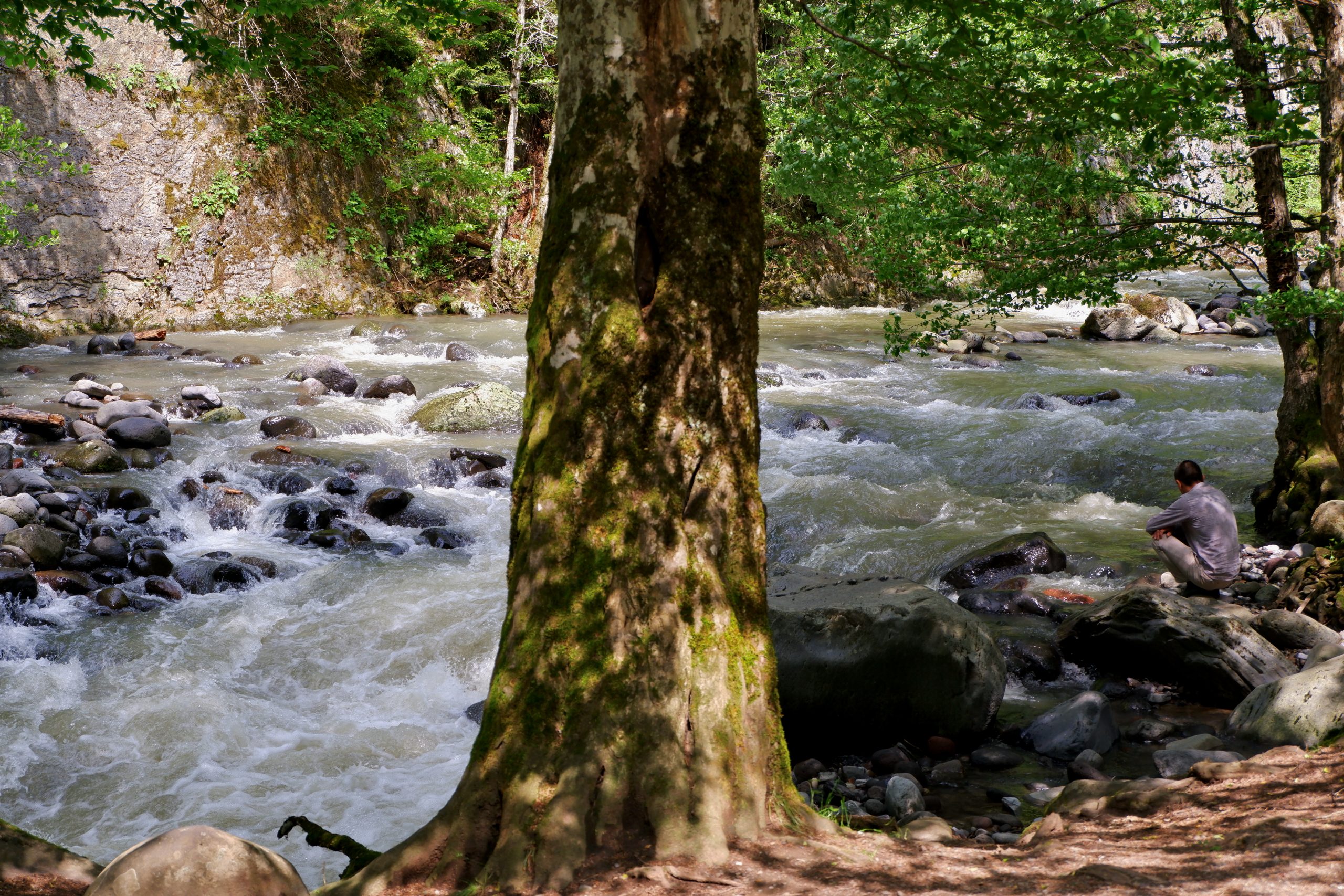 way towards bath
way towards bath
 prohibition signs
prohibition signs
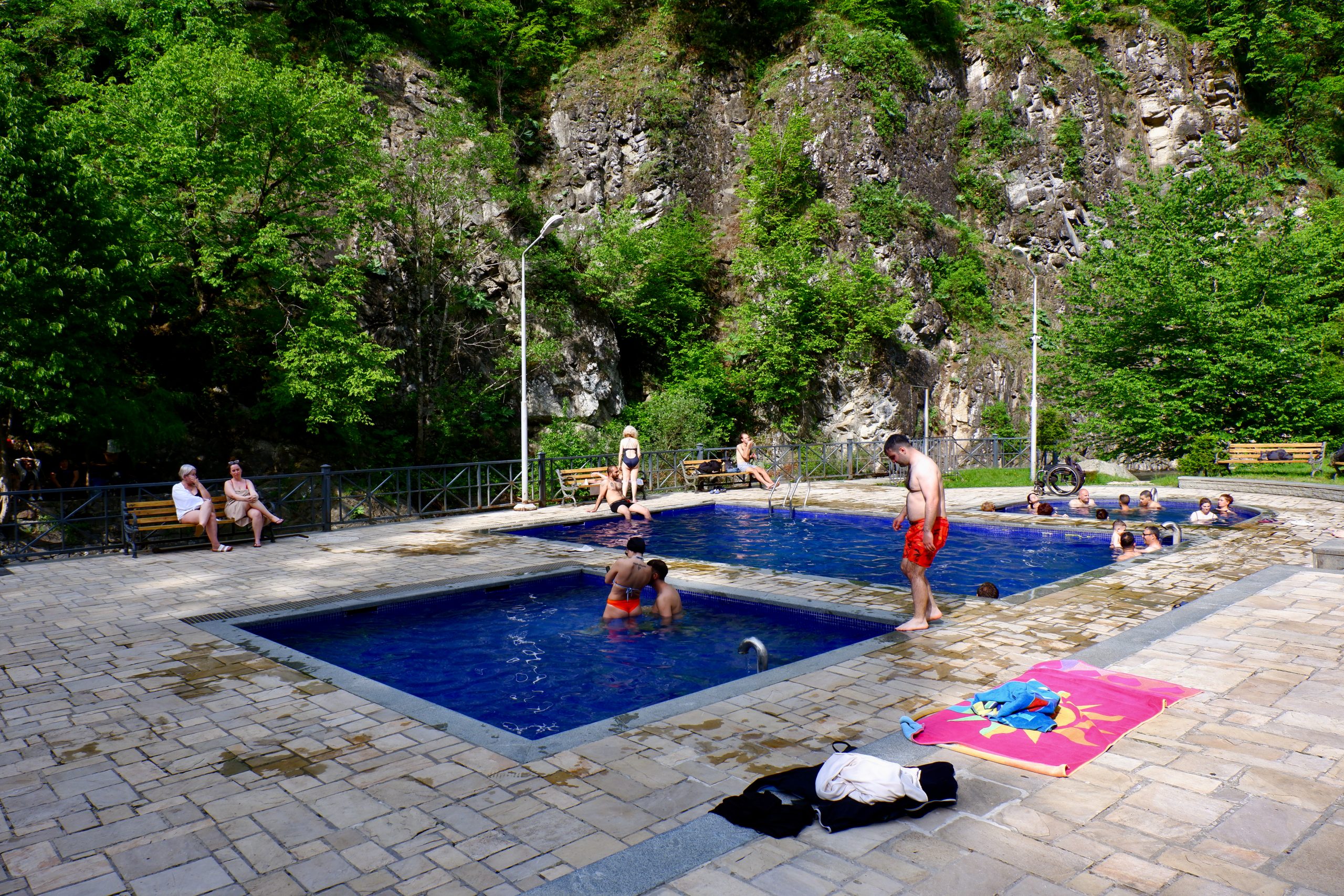 pools from the right
pools from the right
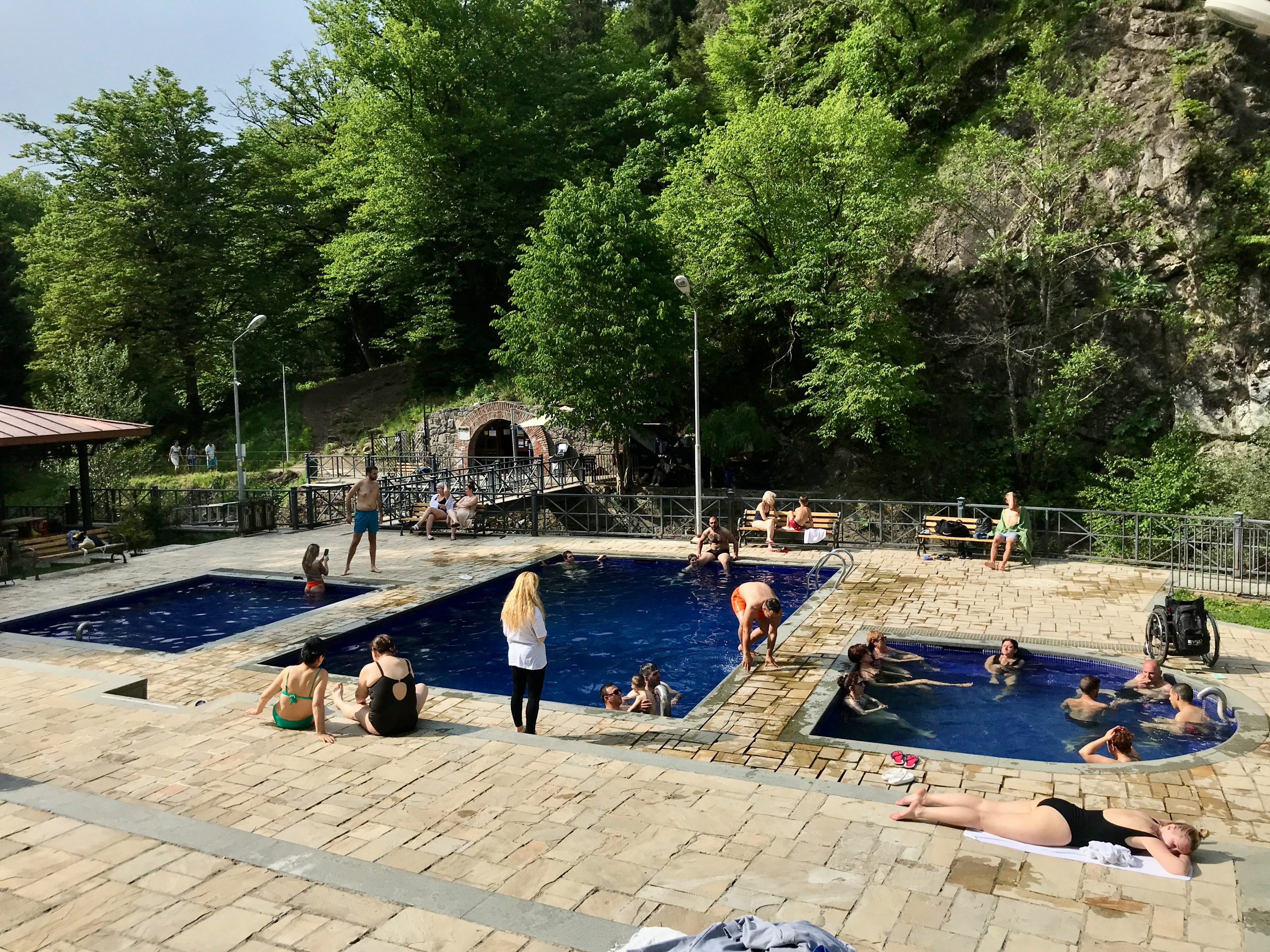 pools from above left
pools from above left
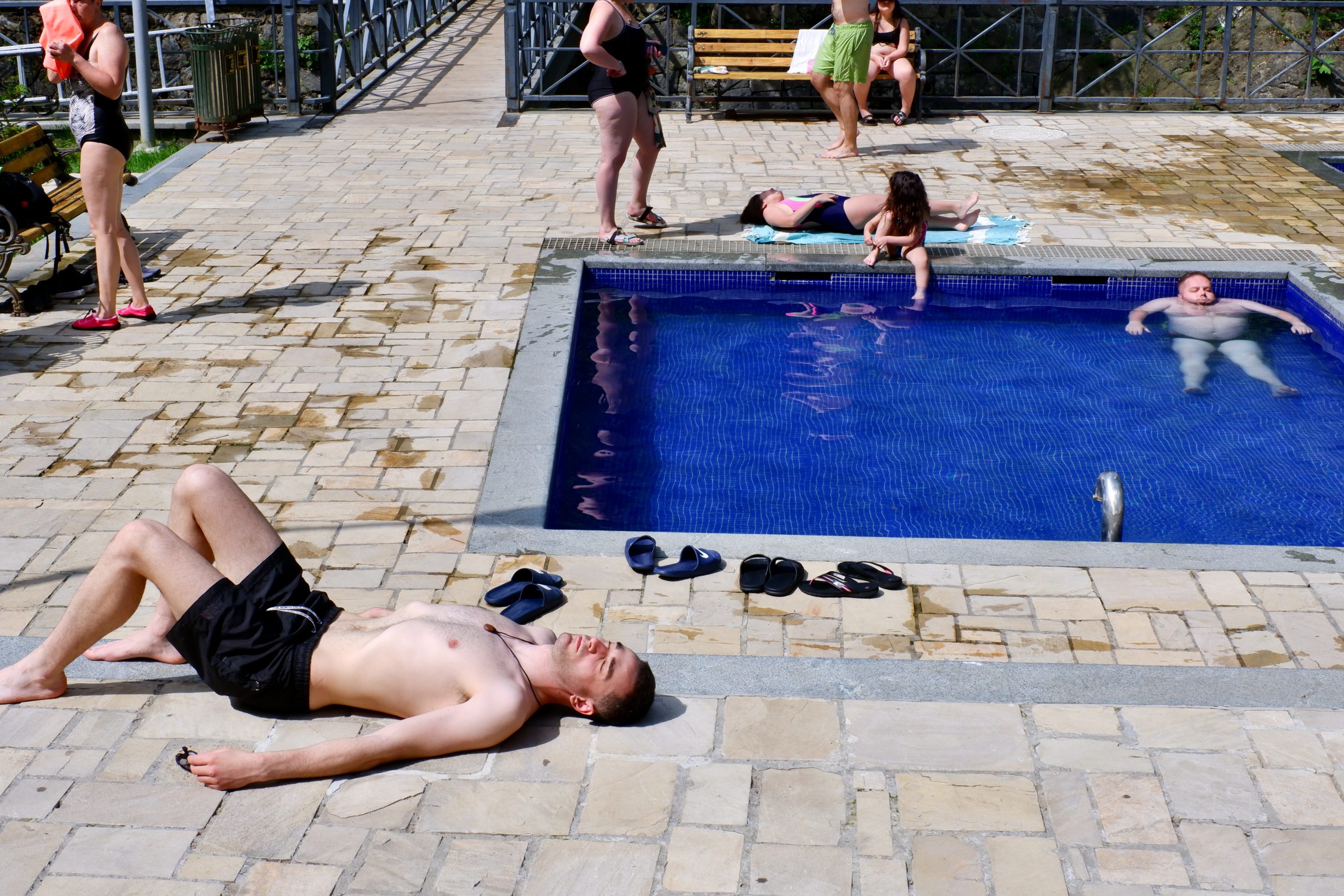 pool from close
pool from close
And so far I have had a more pleasant time than in Poti.
